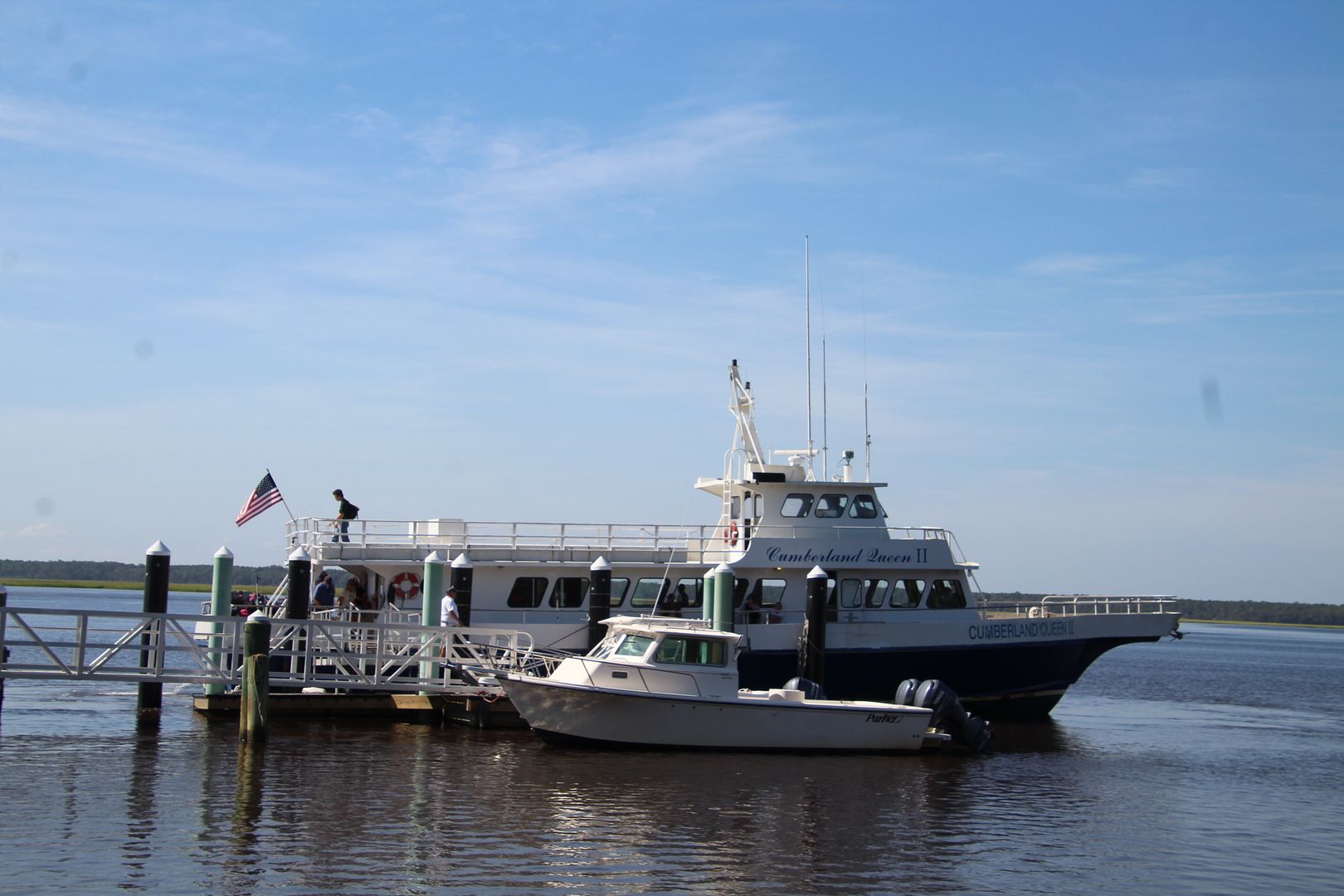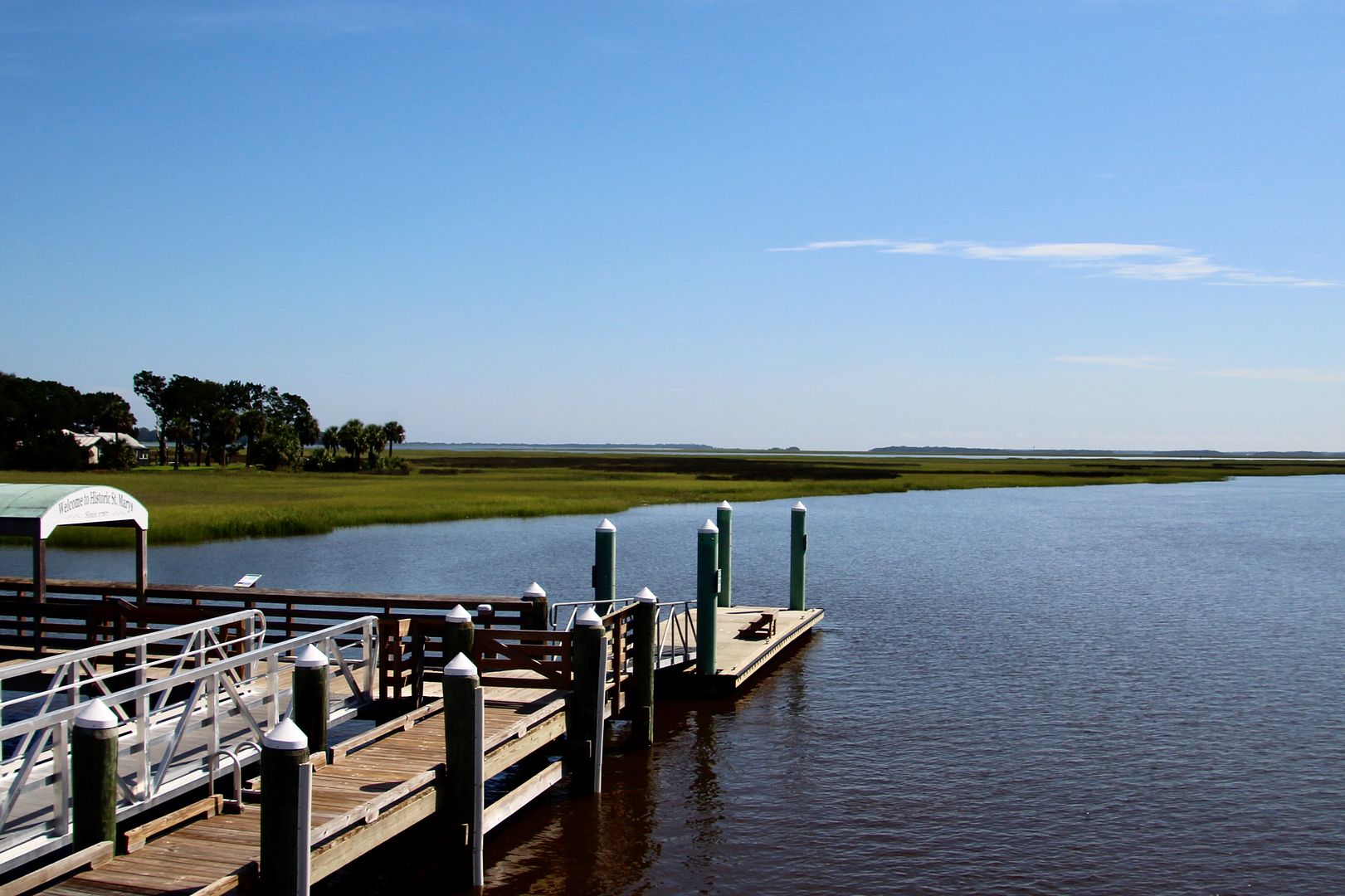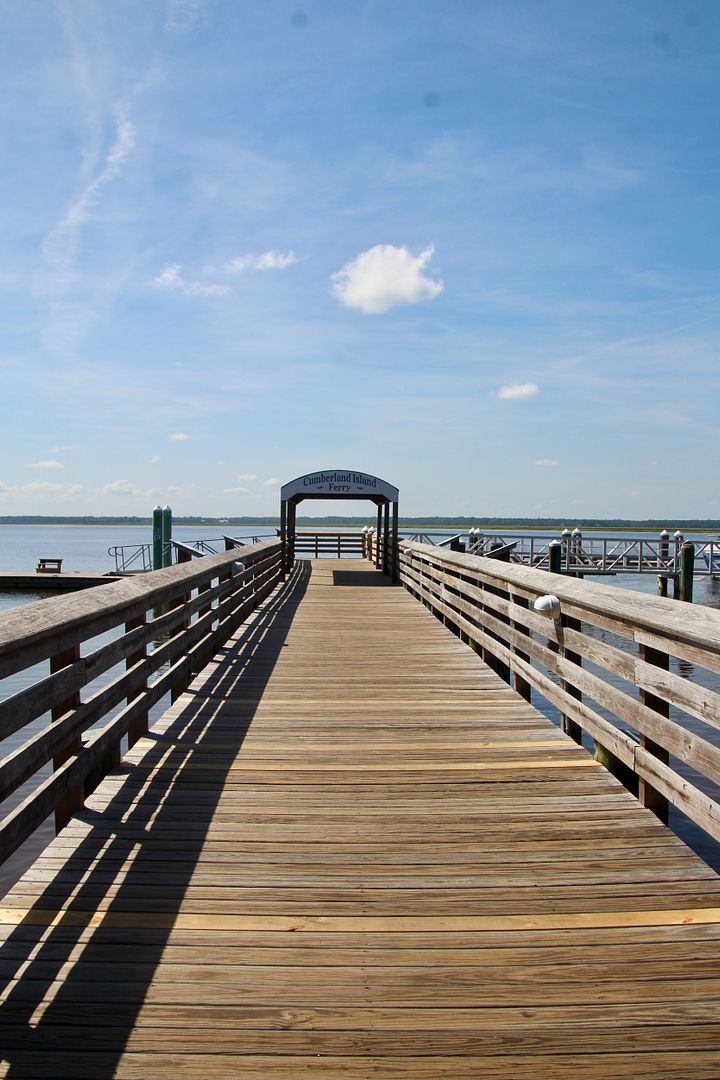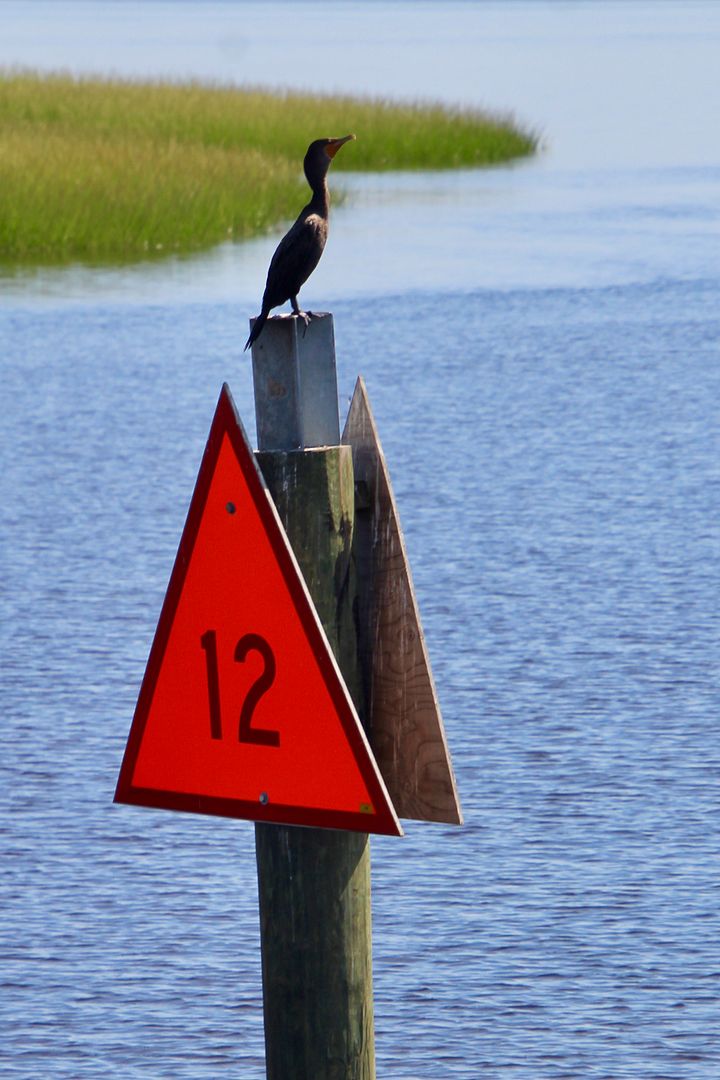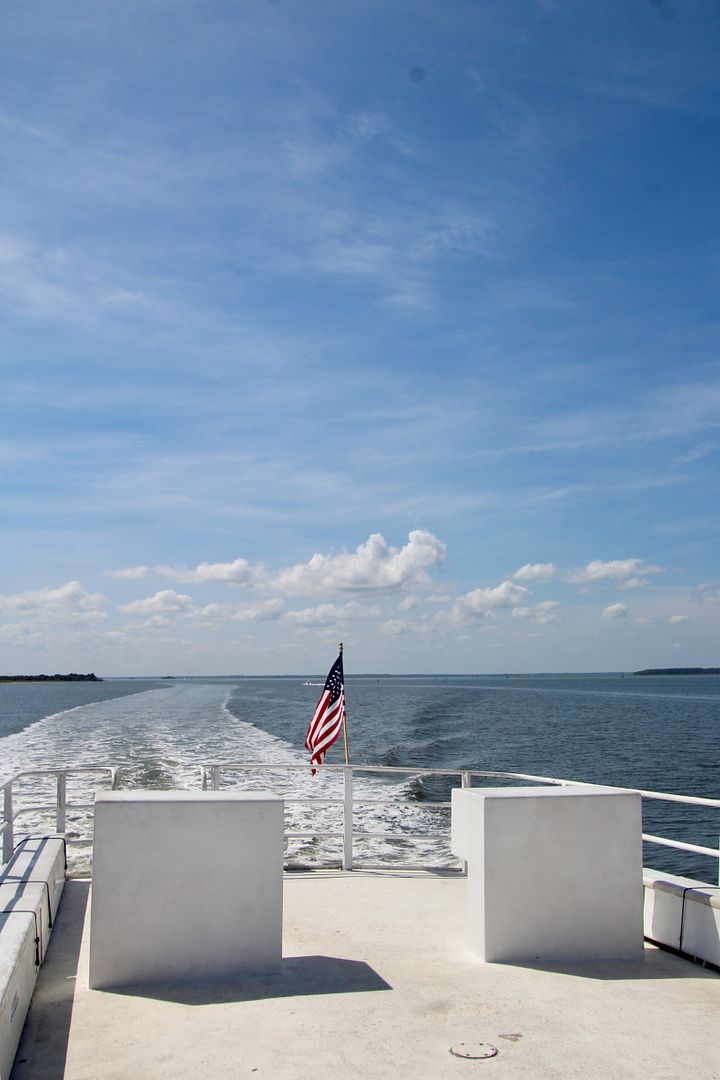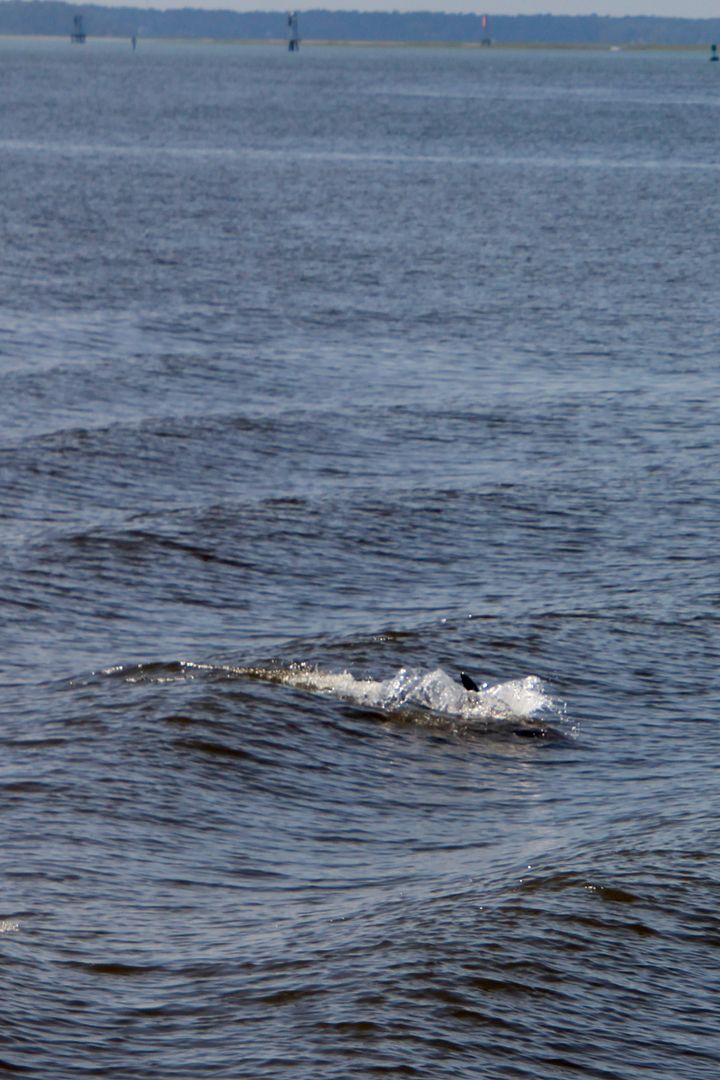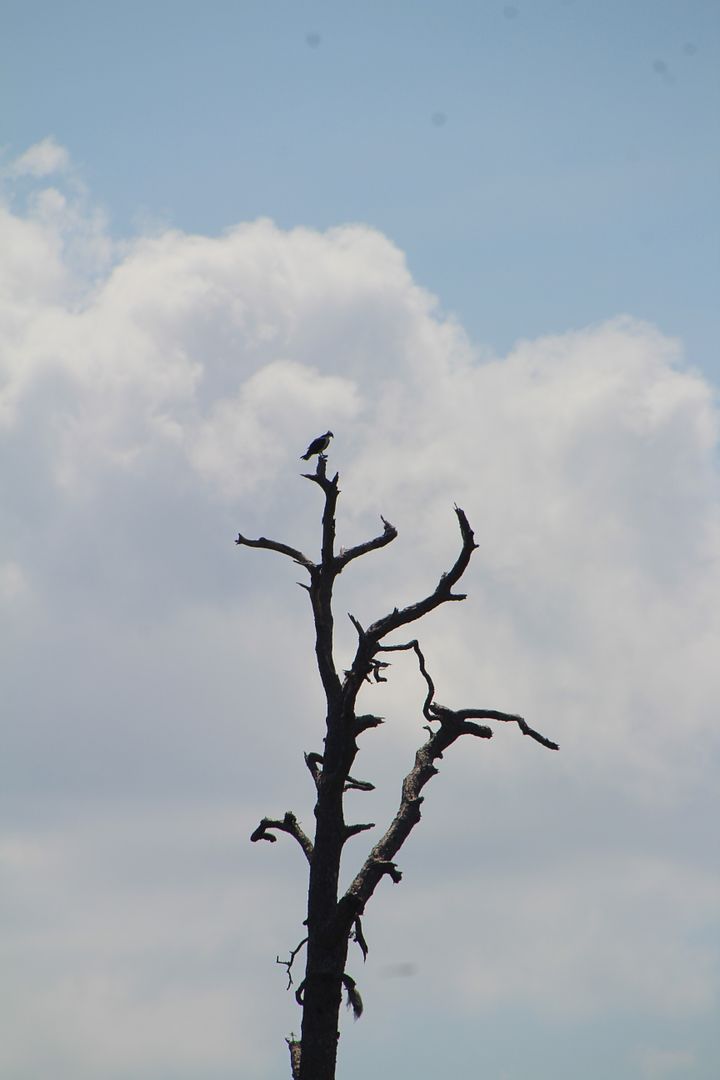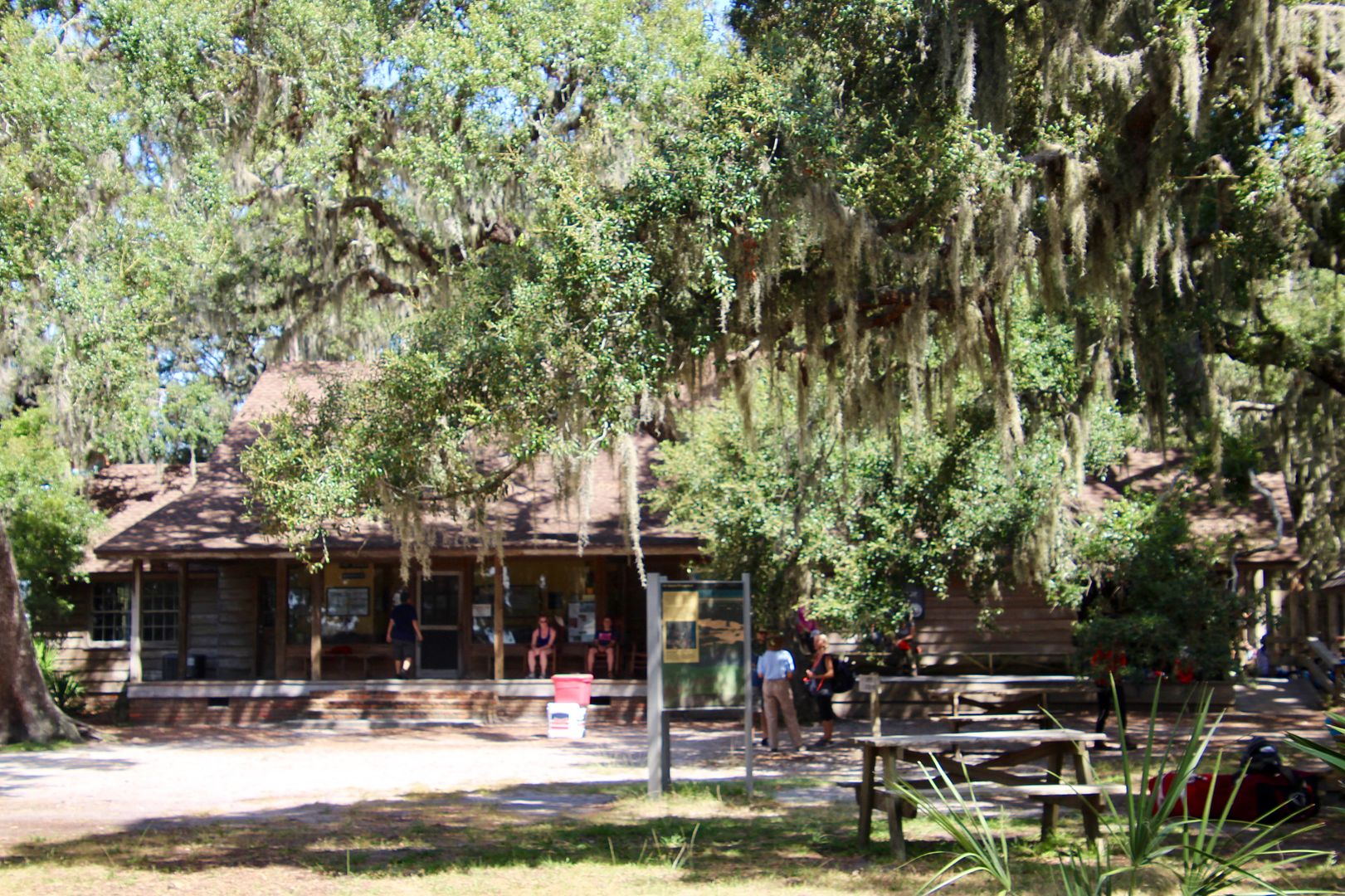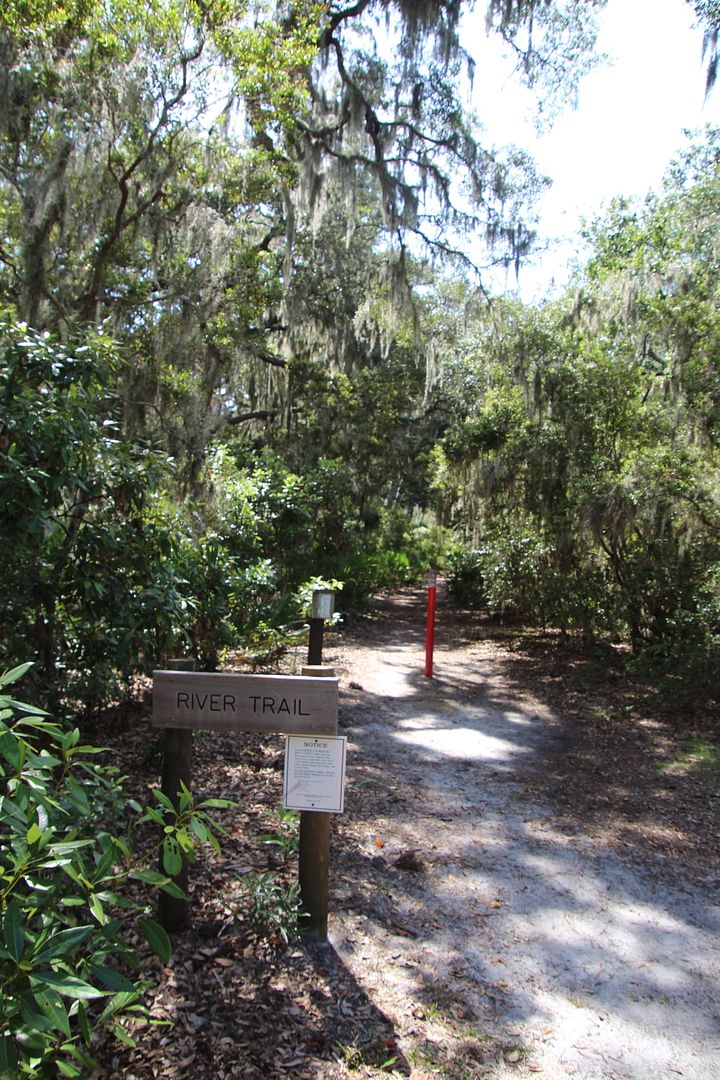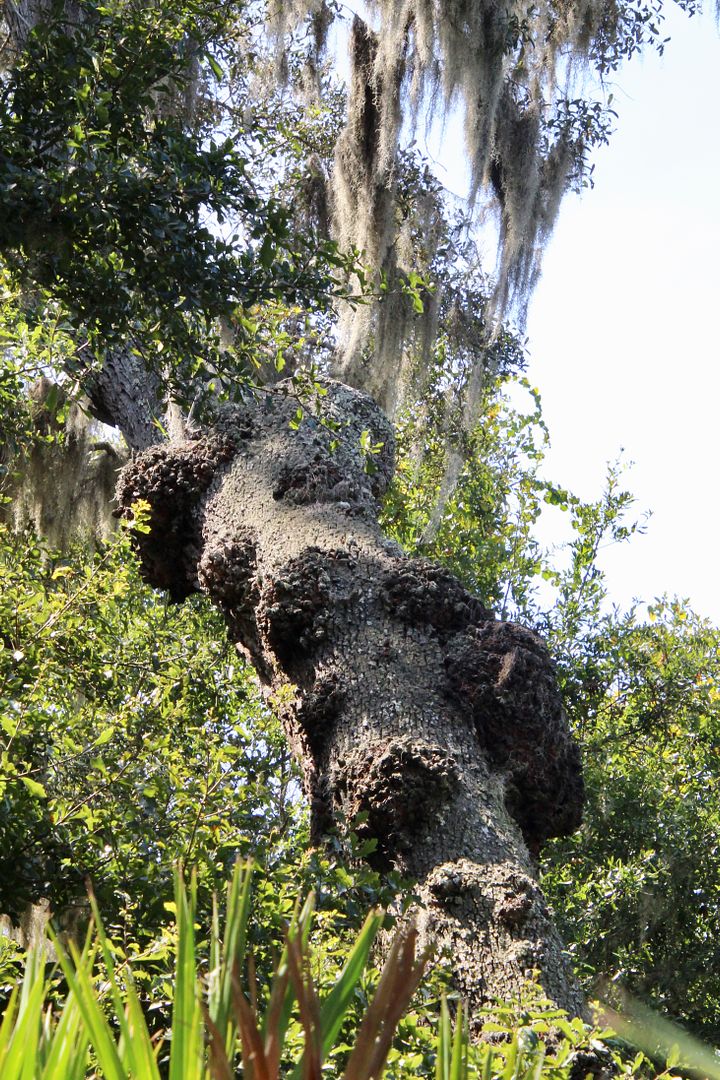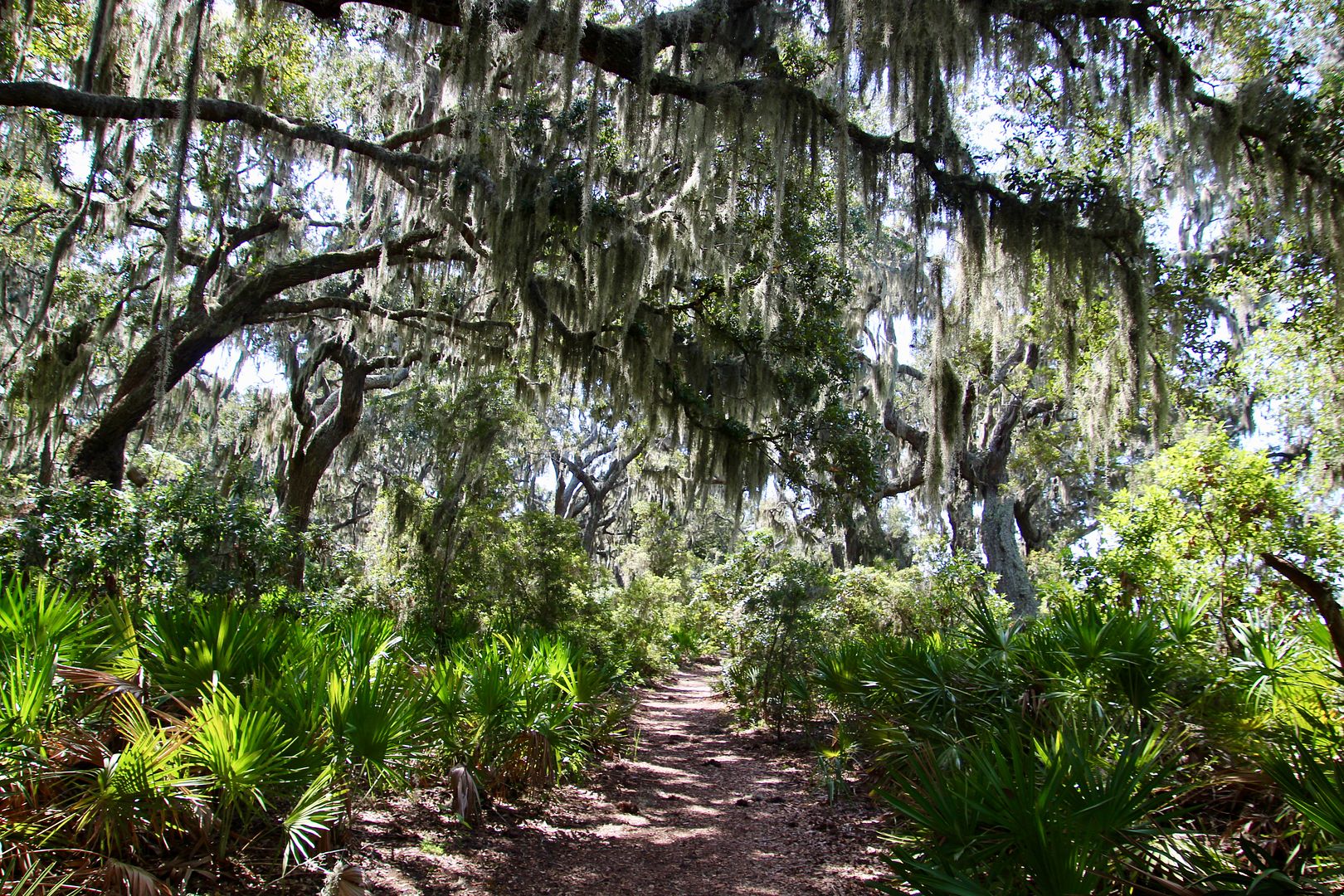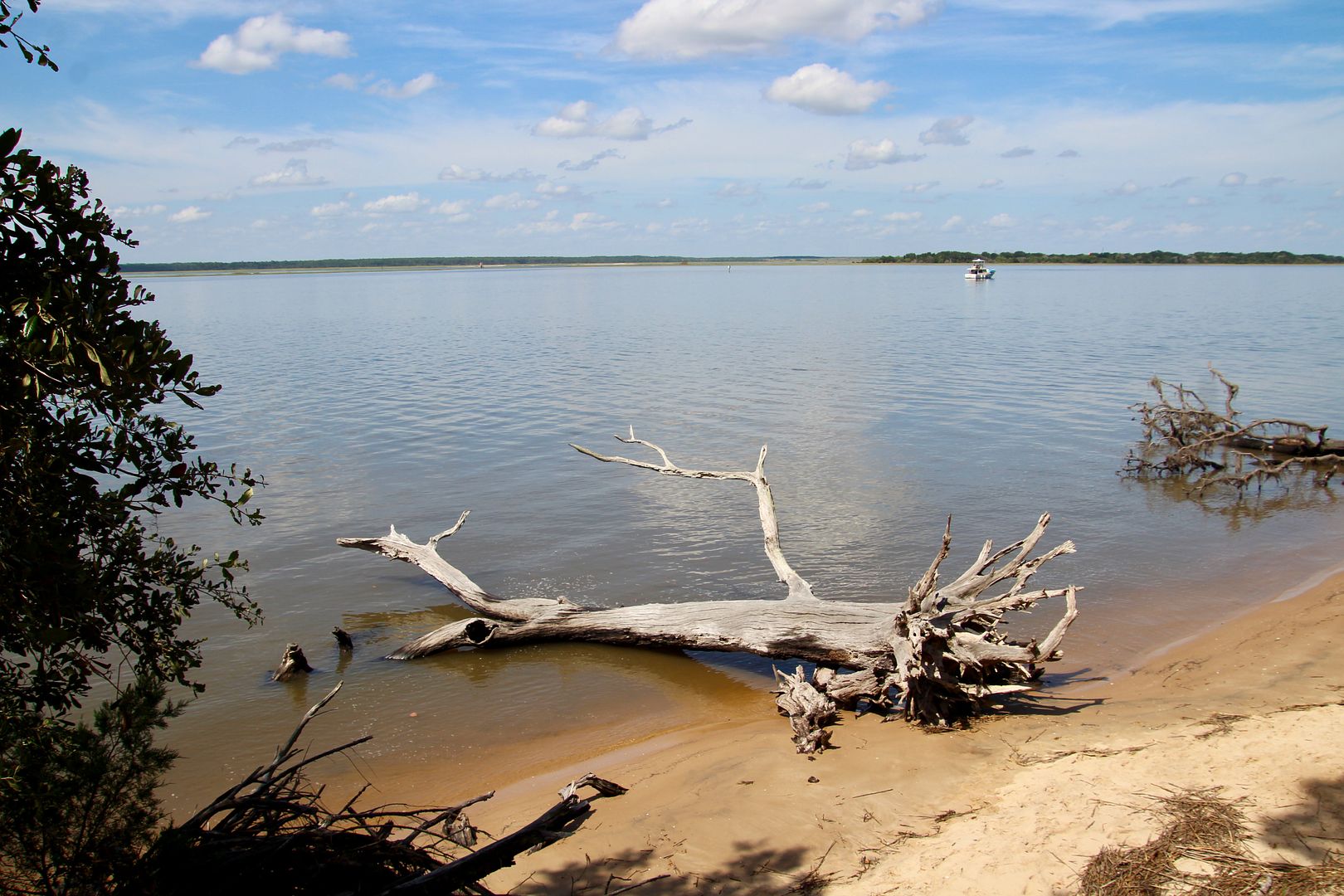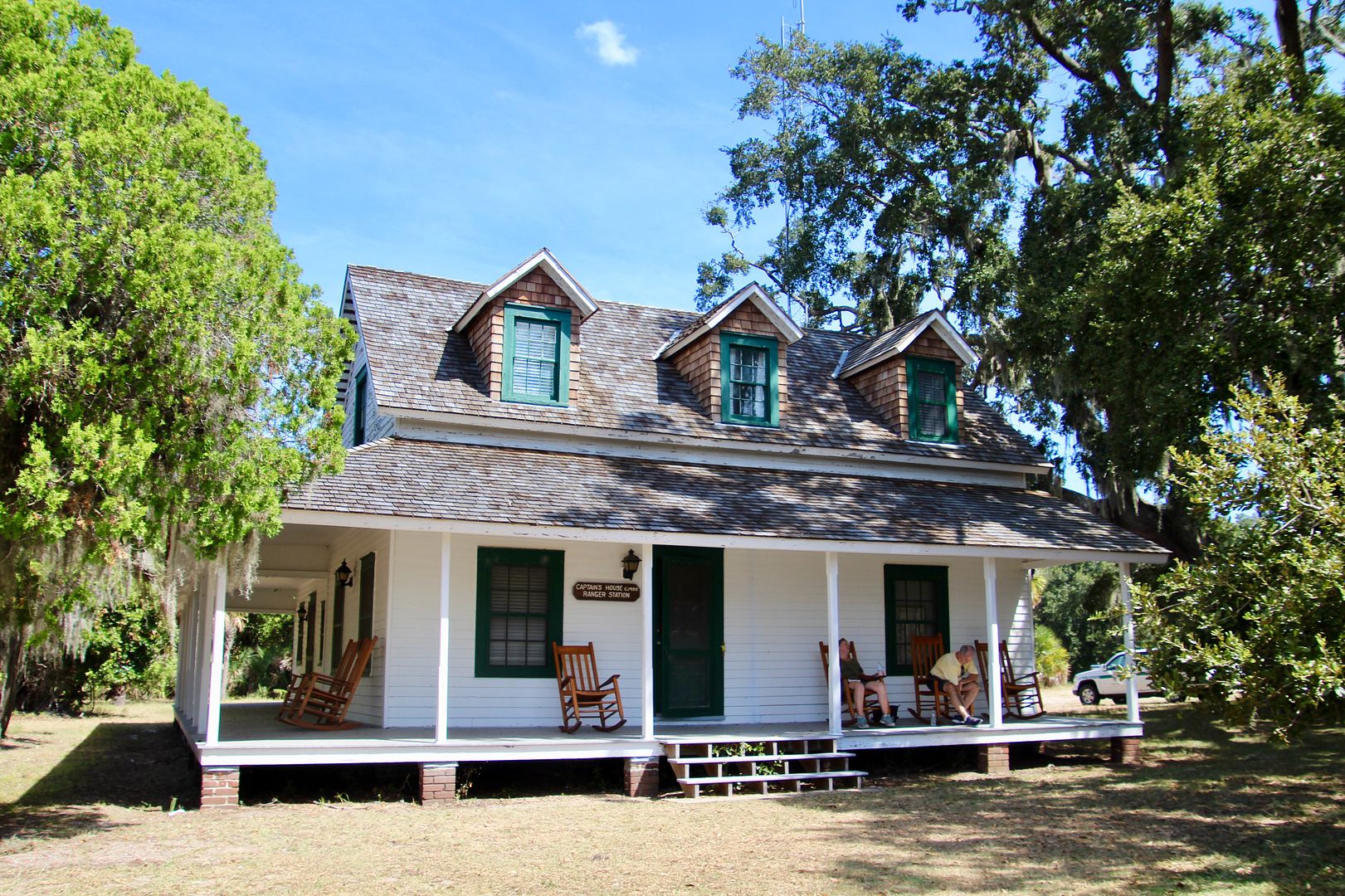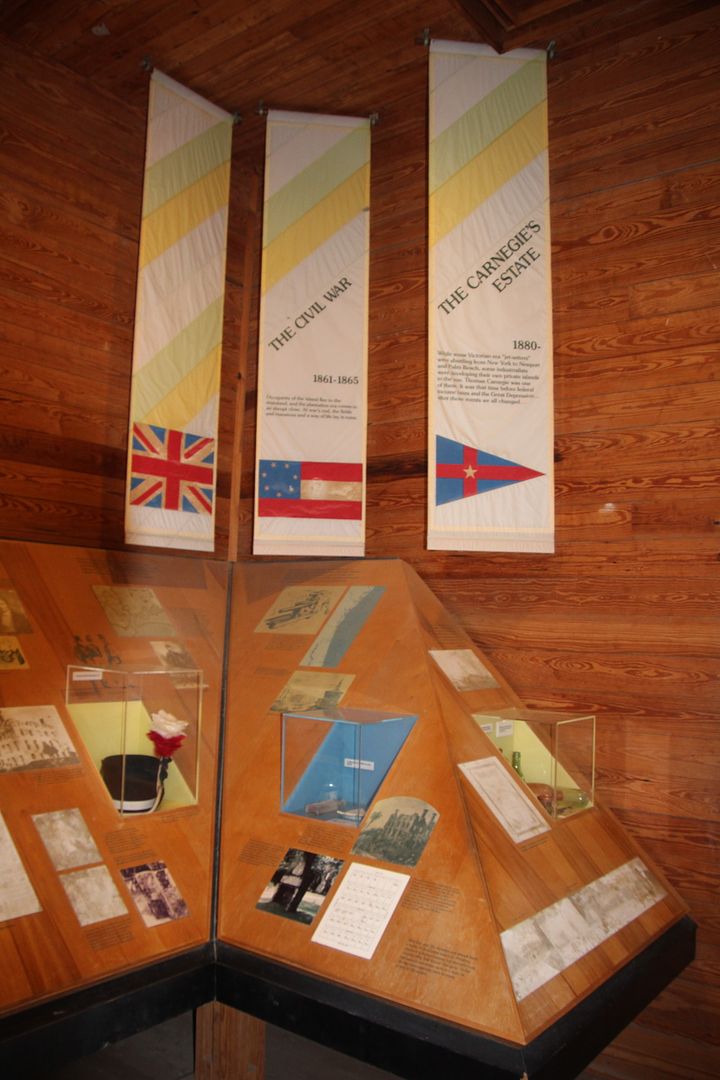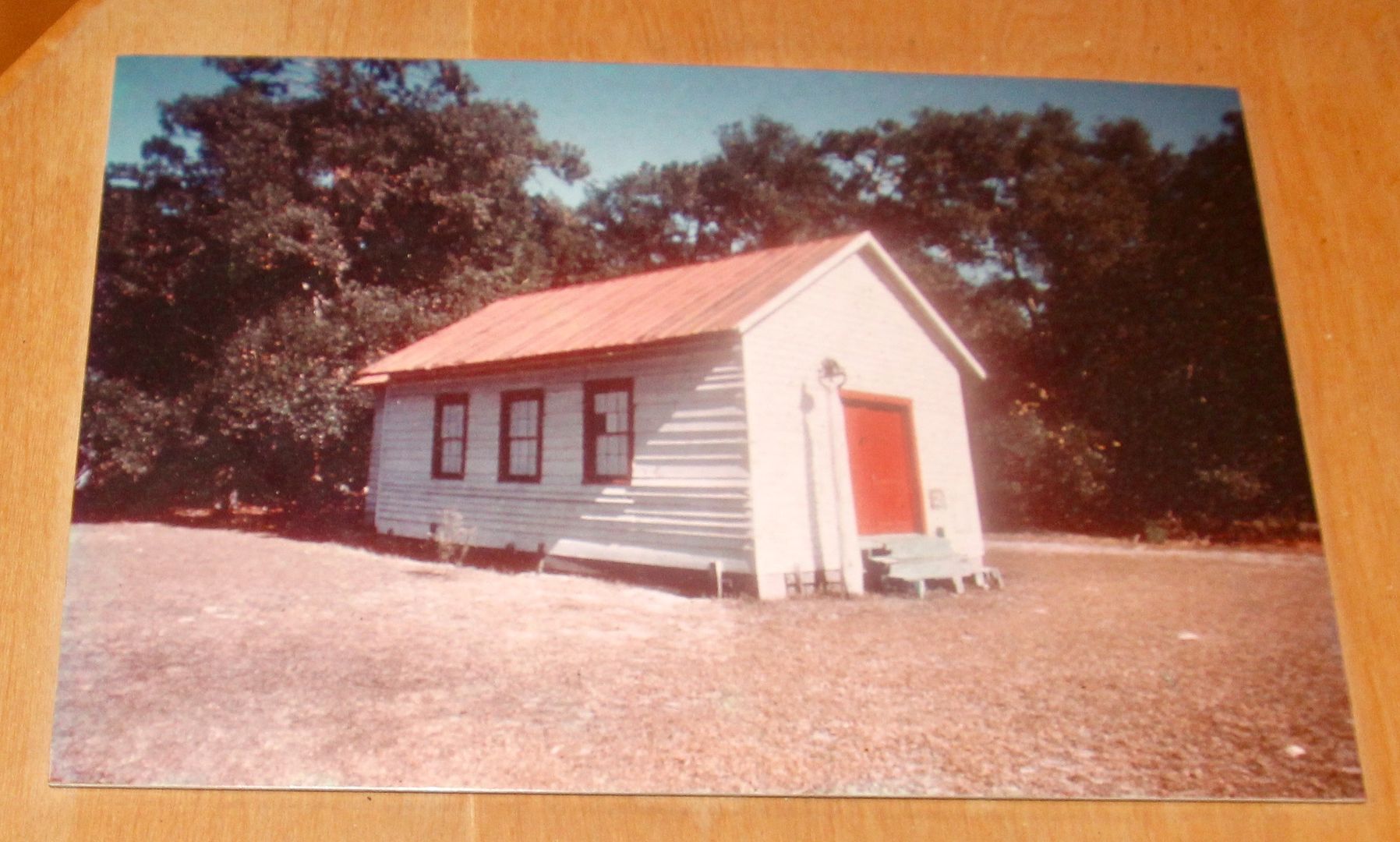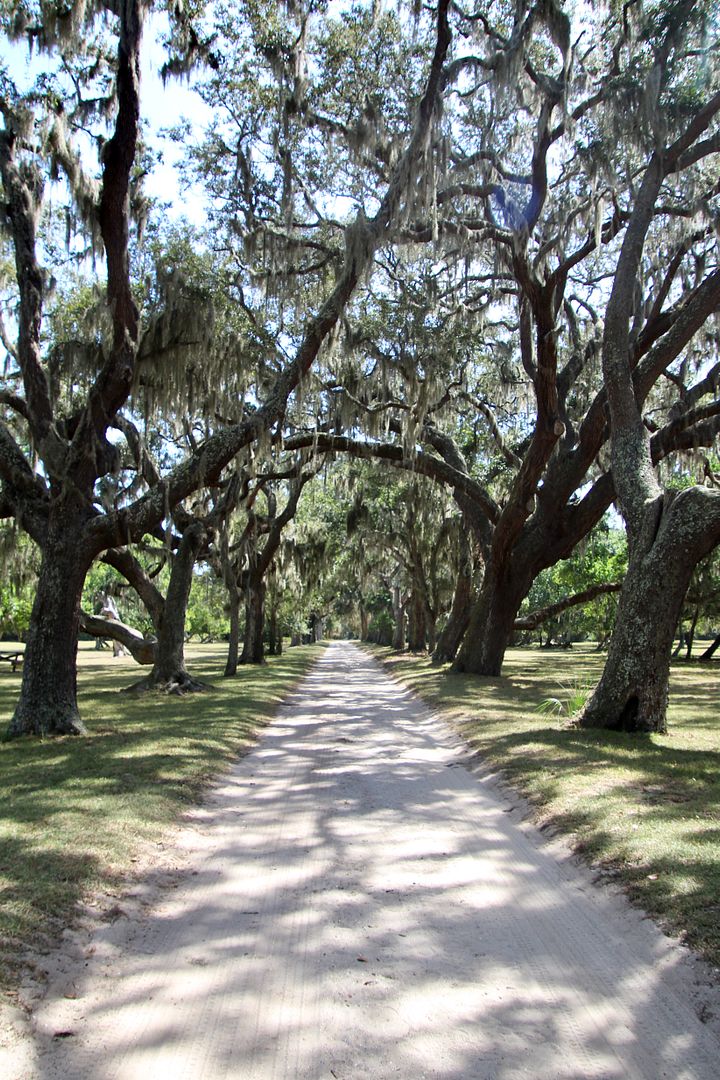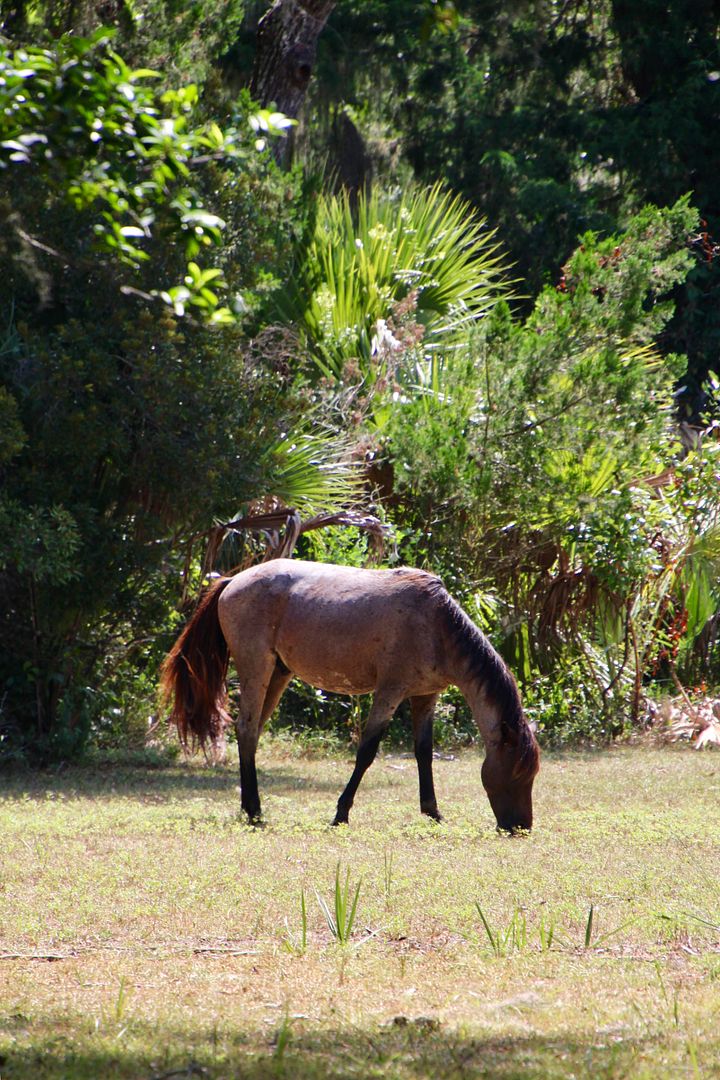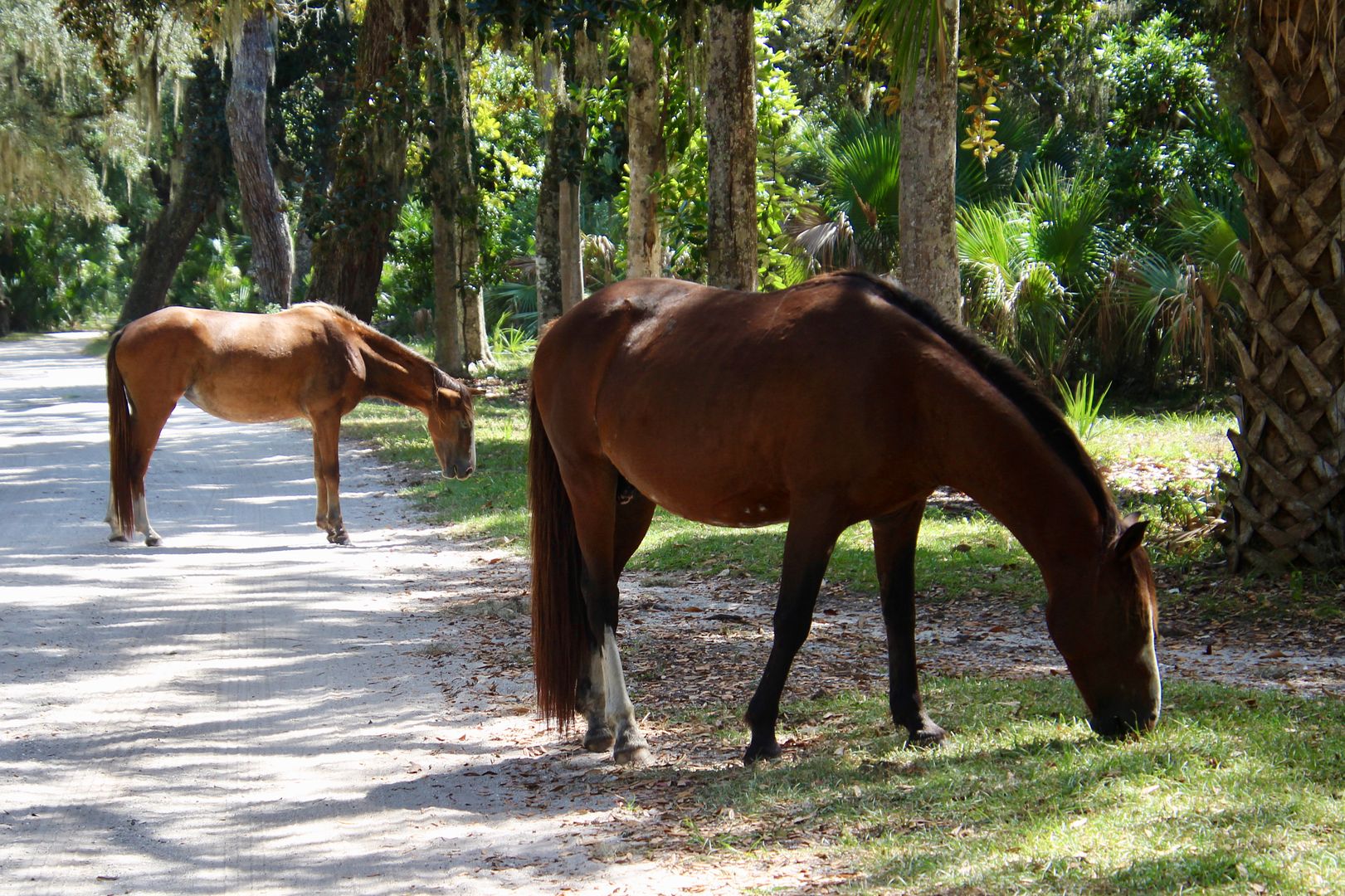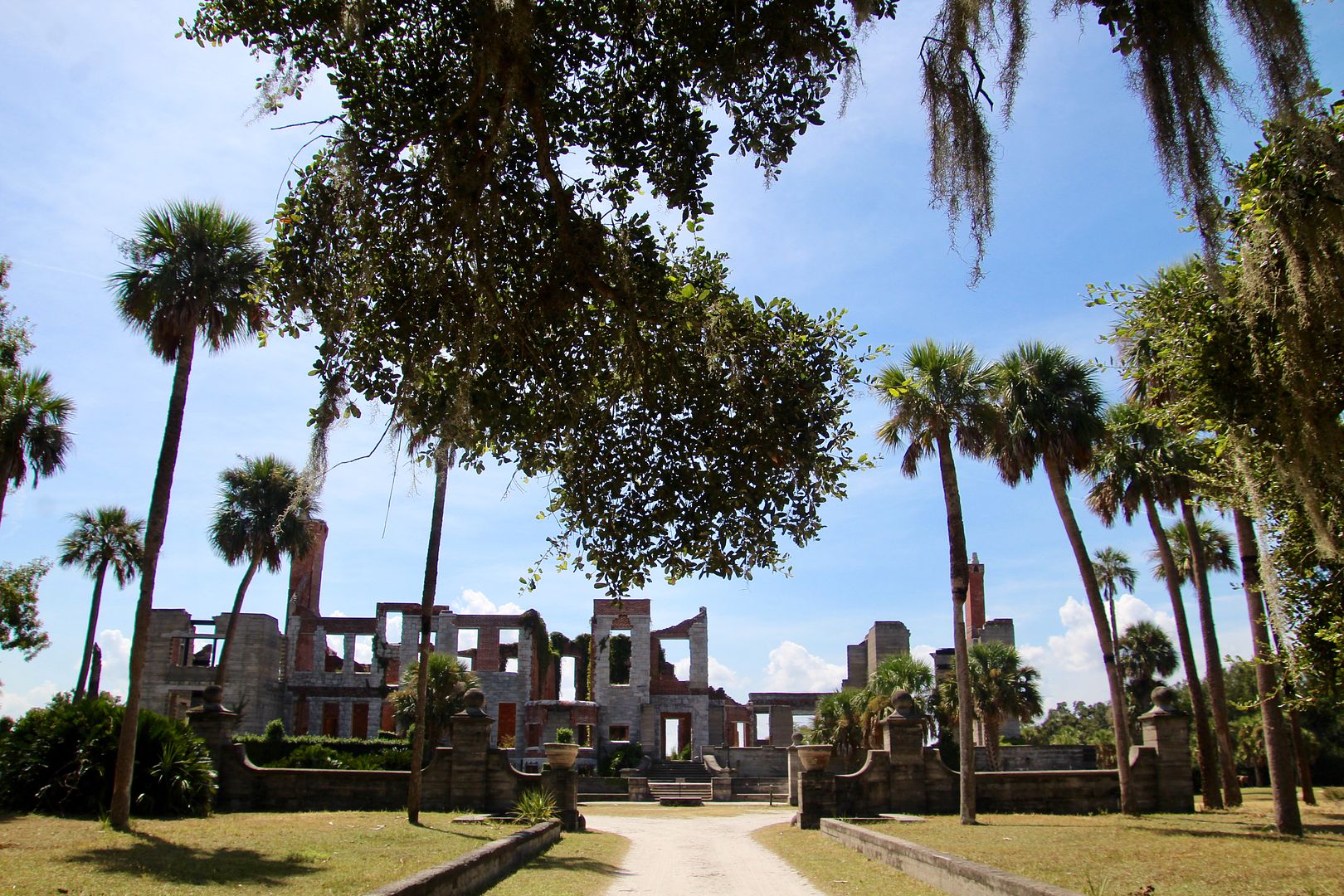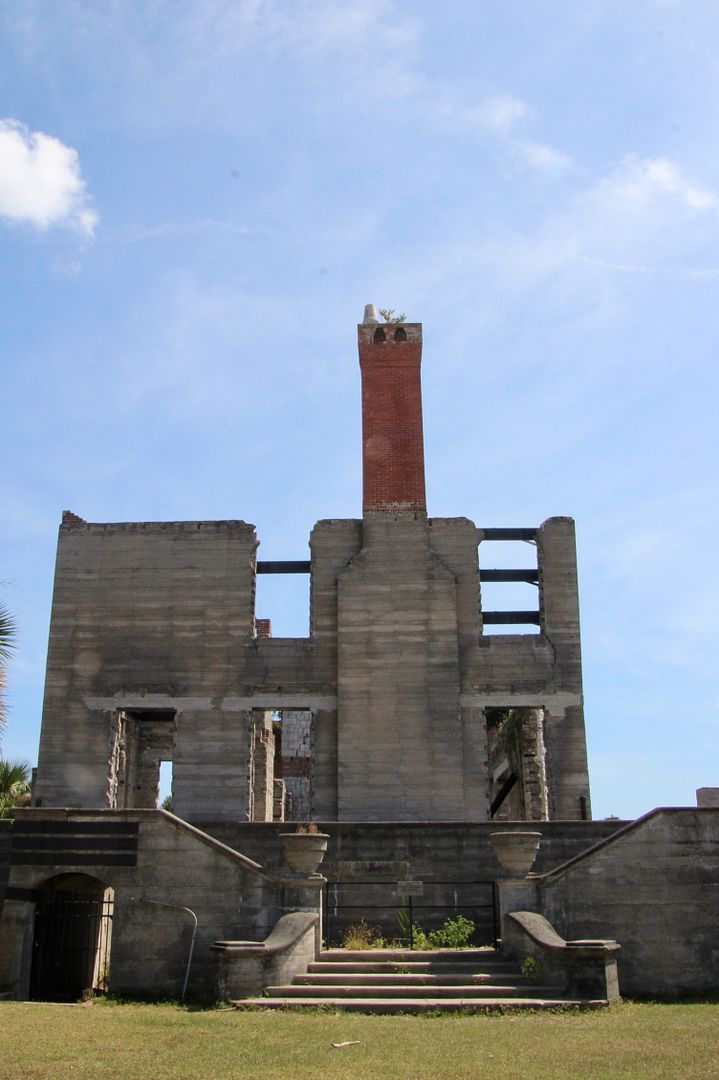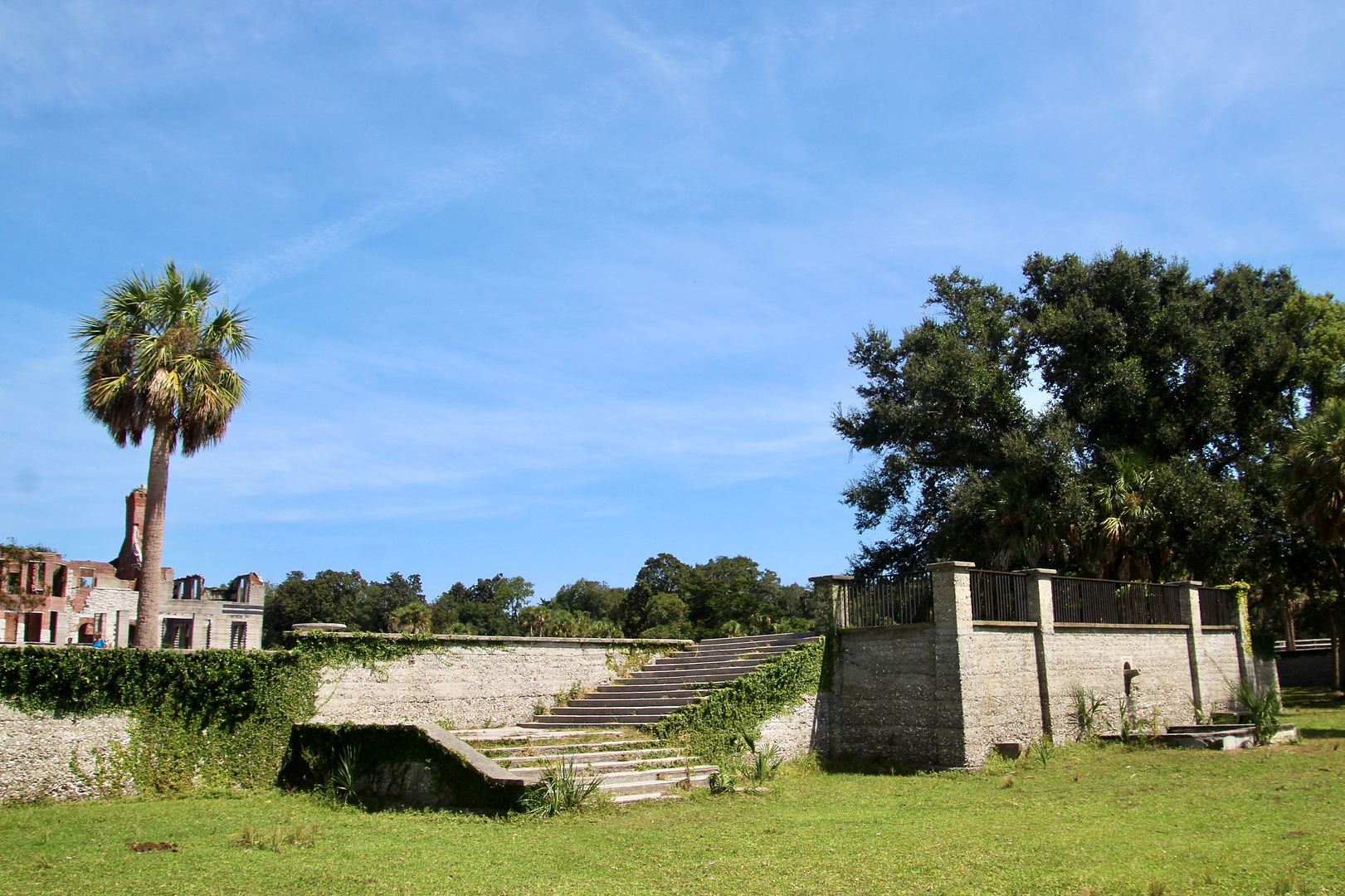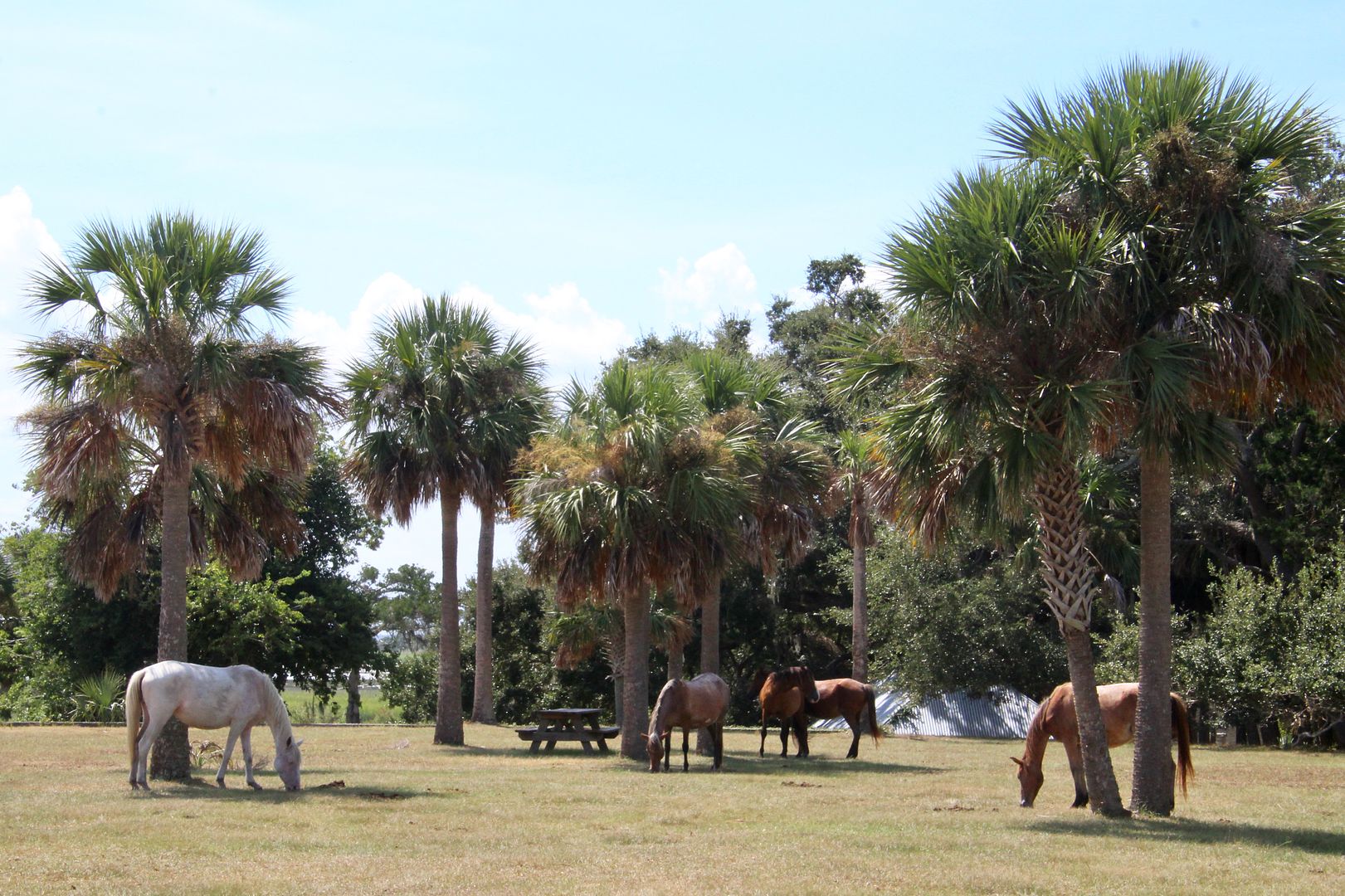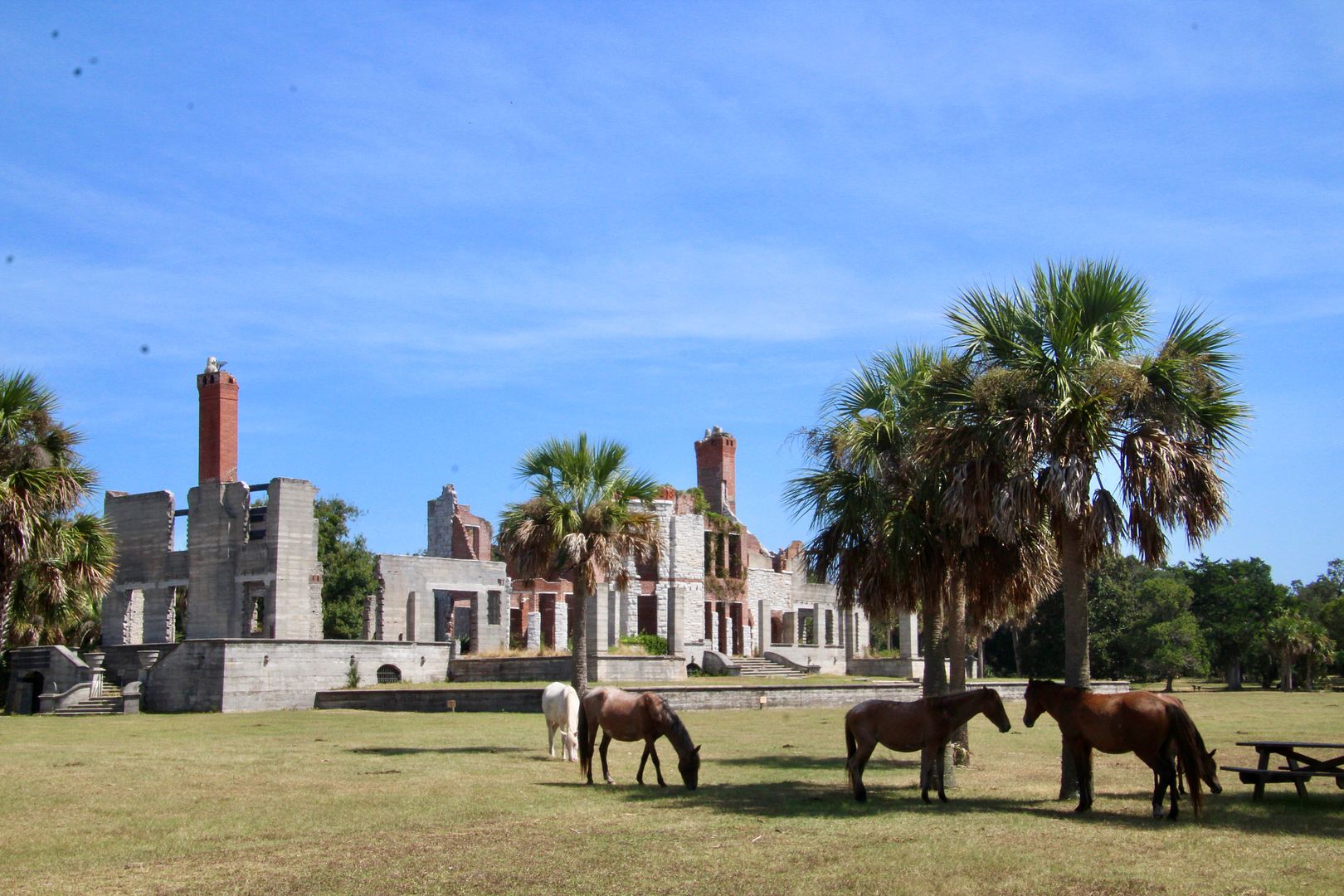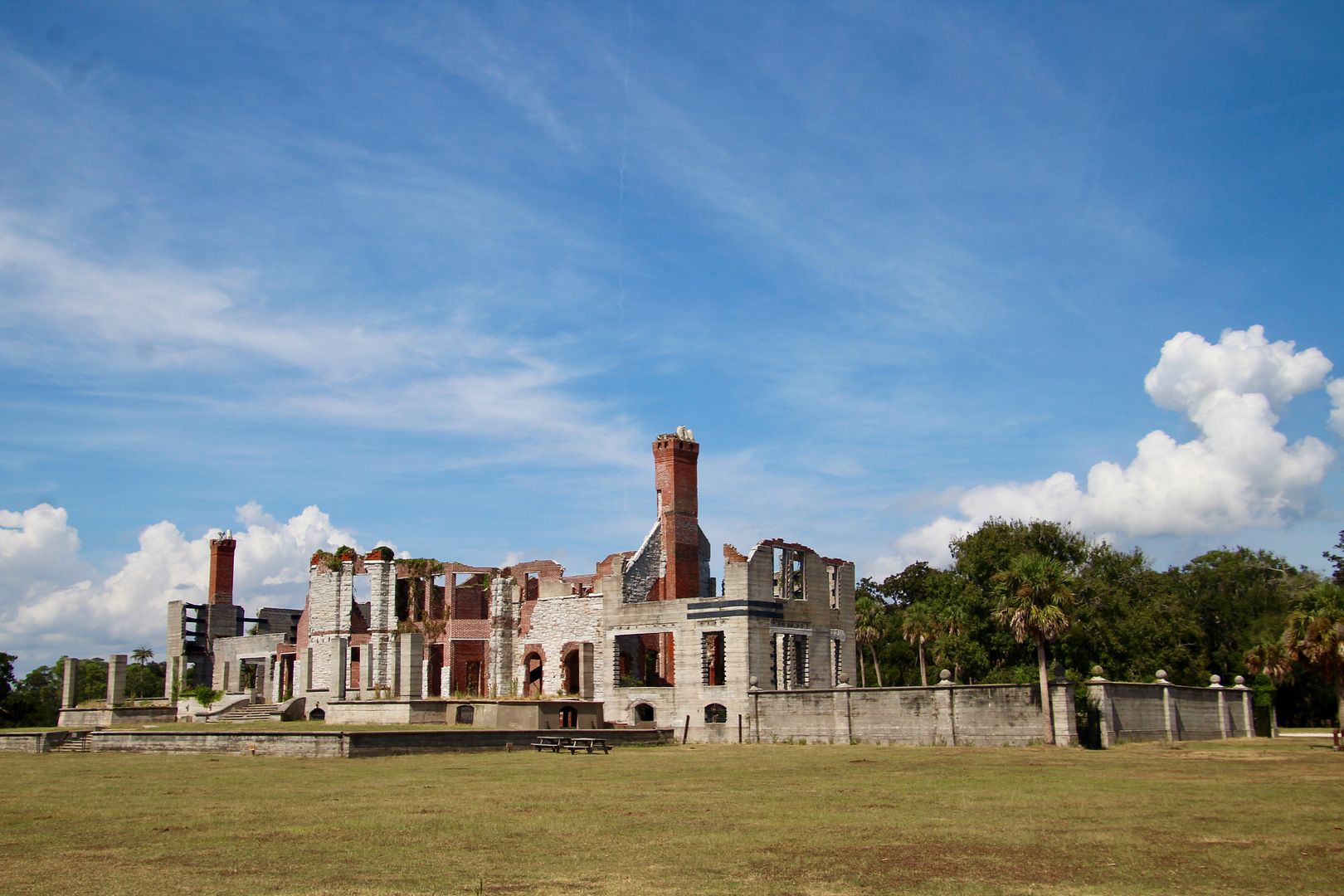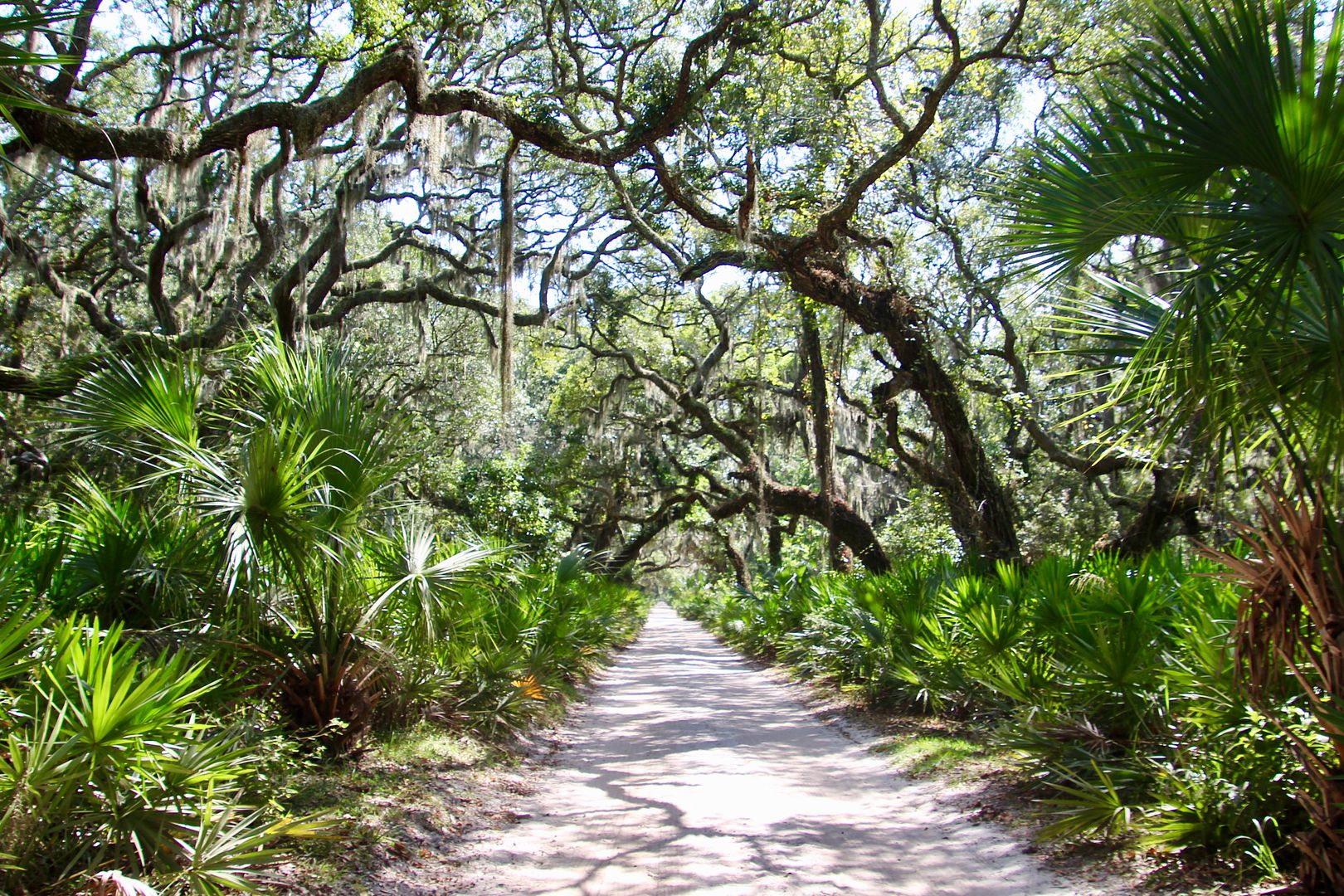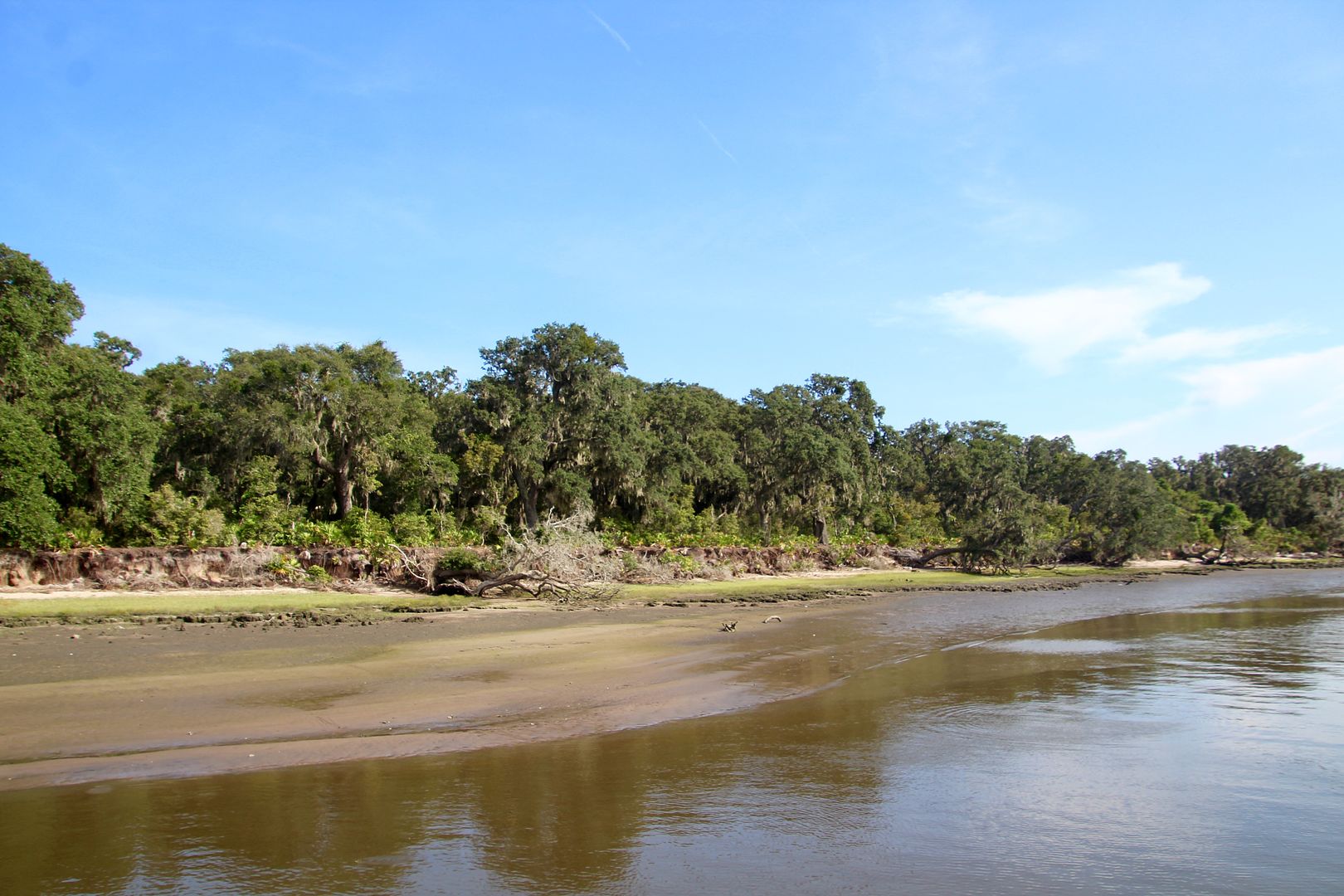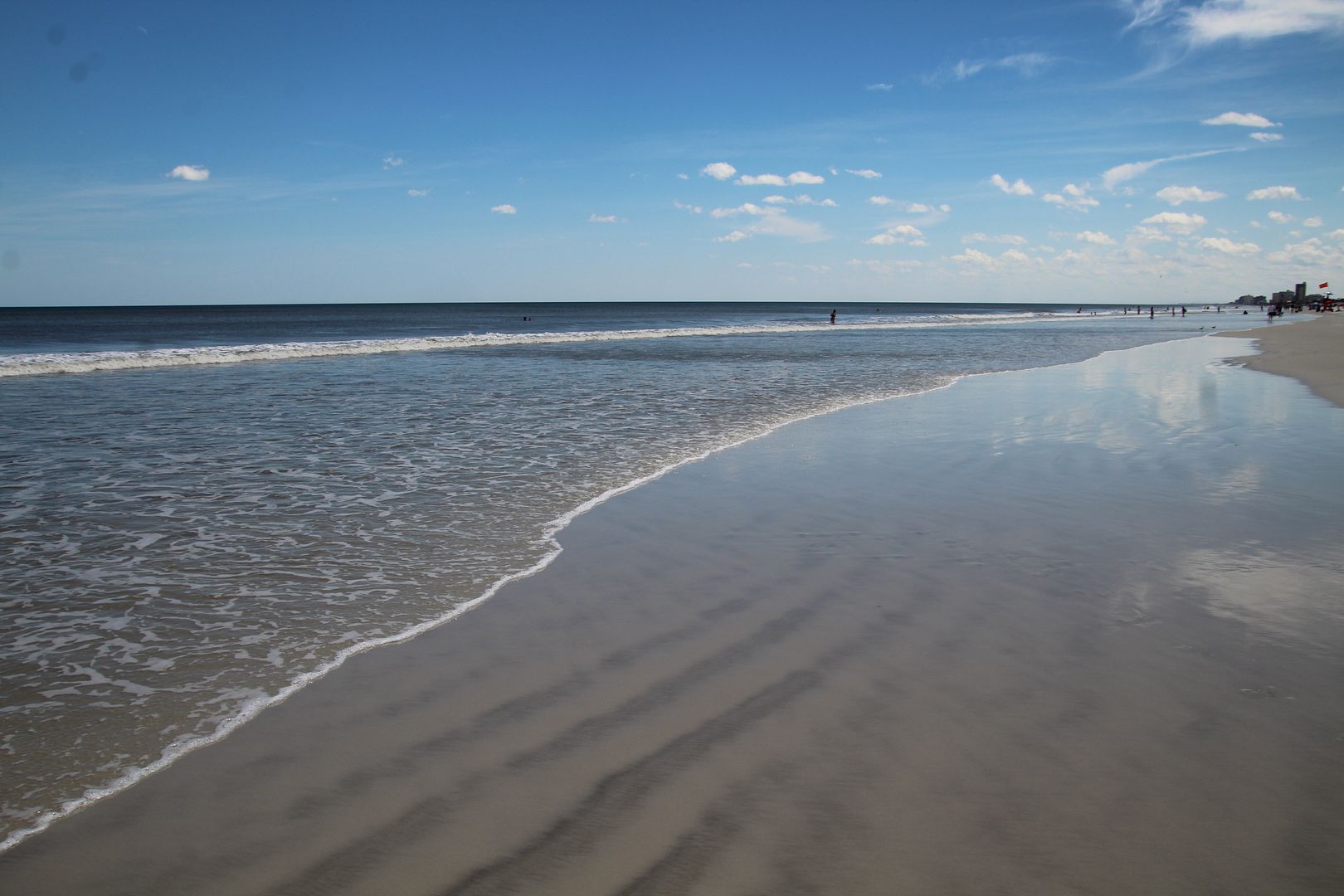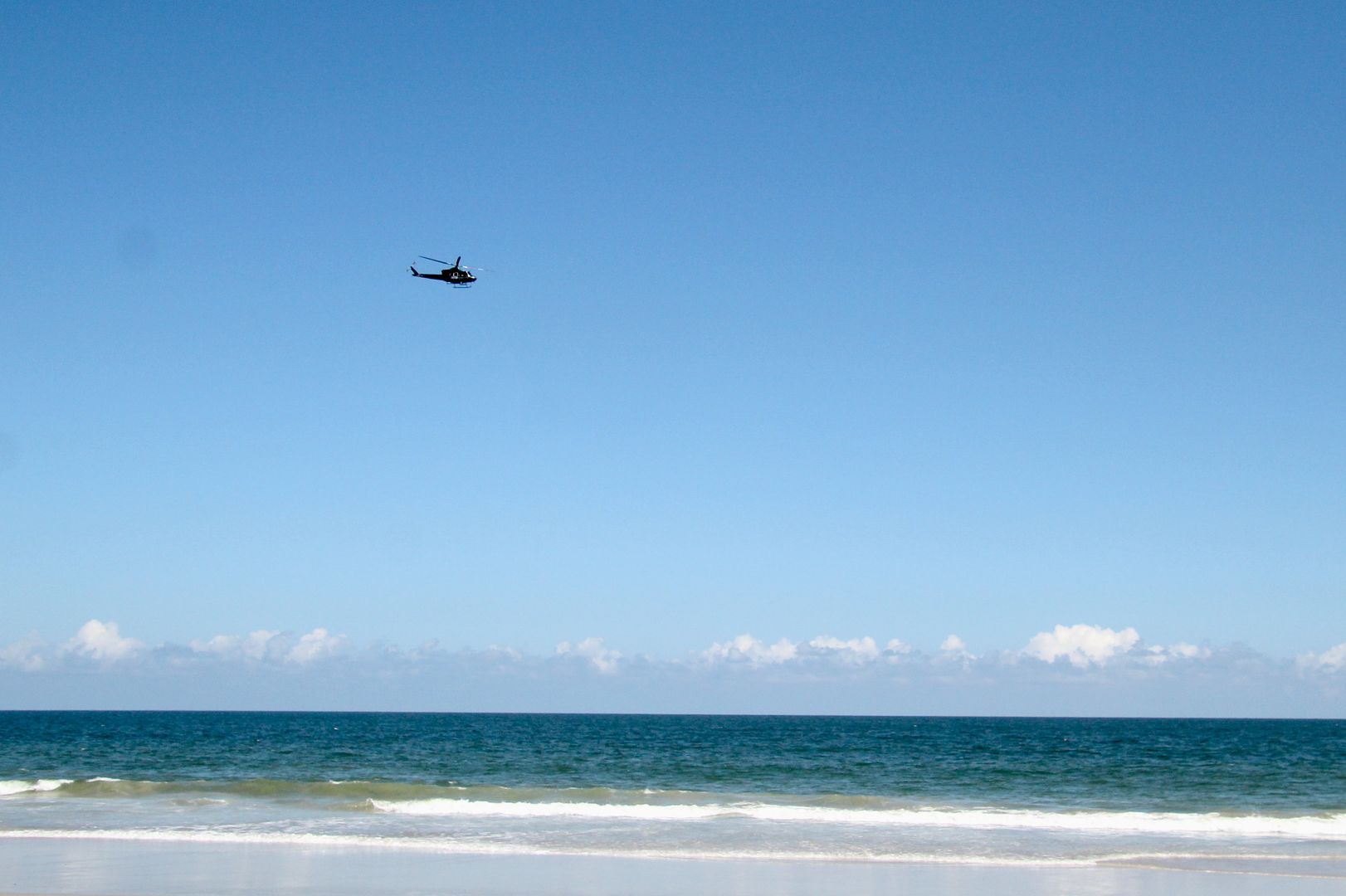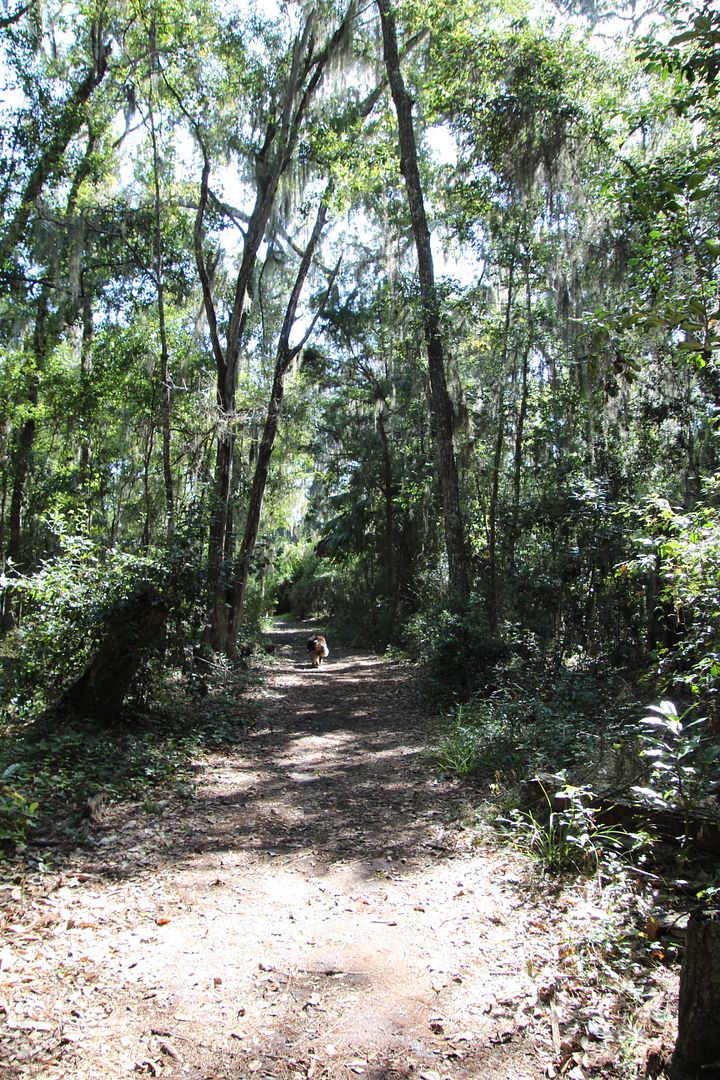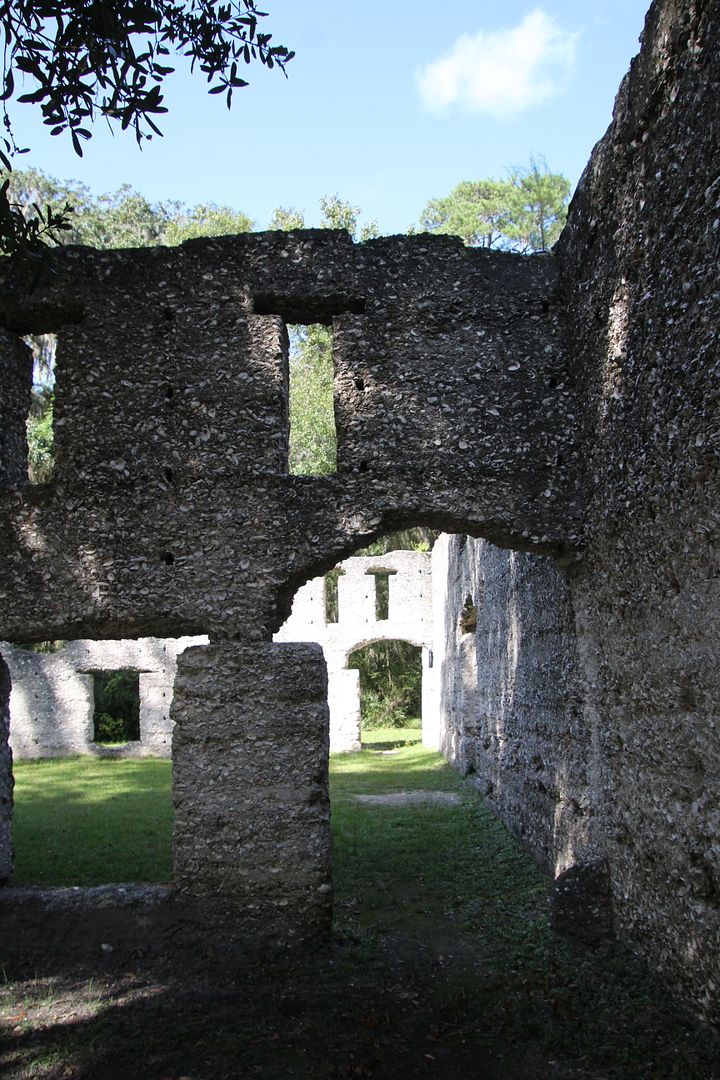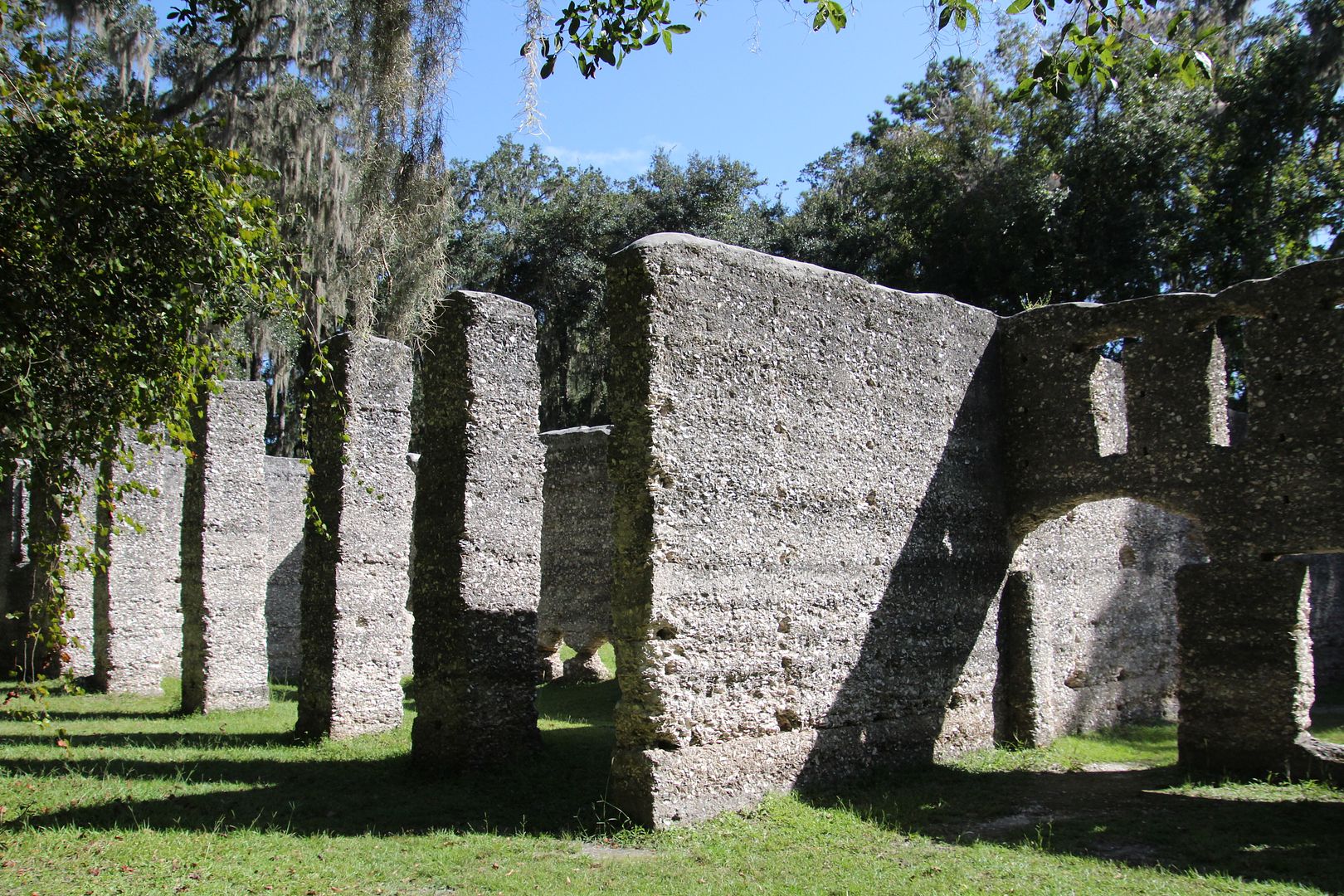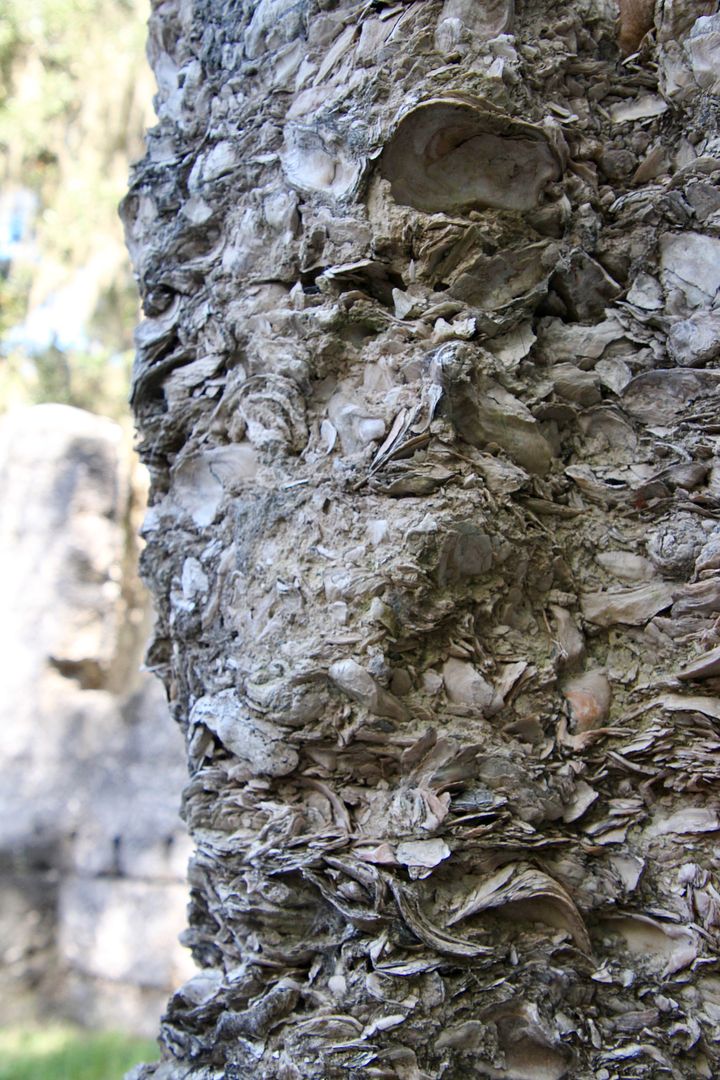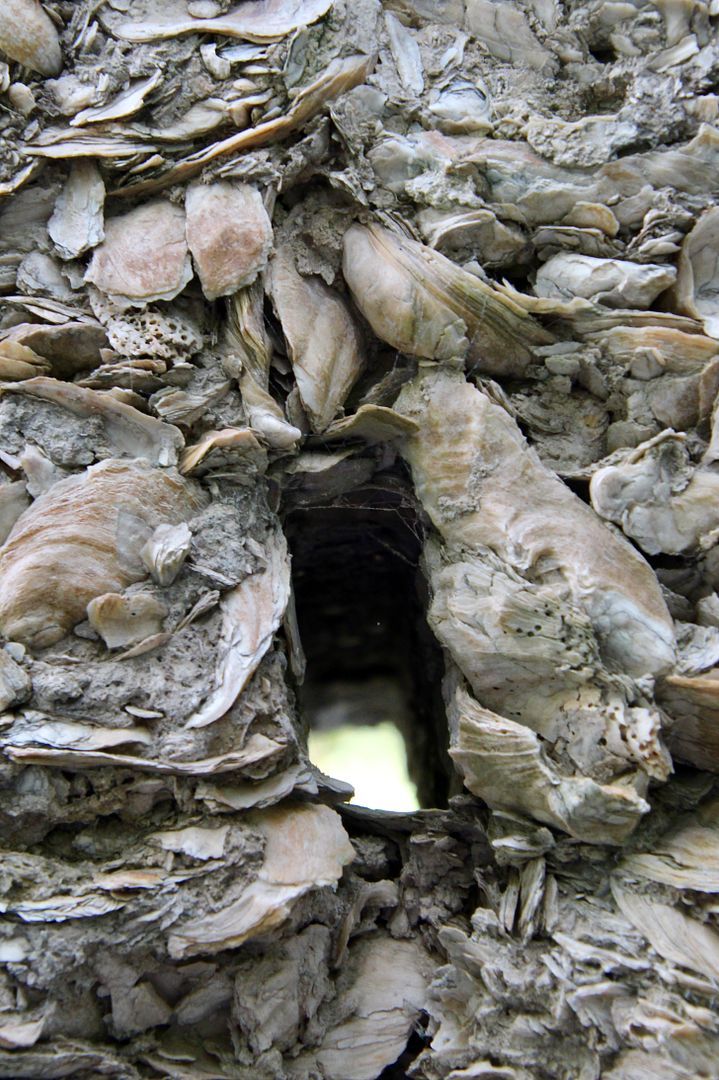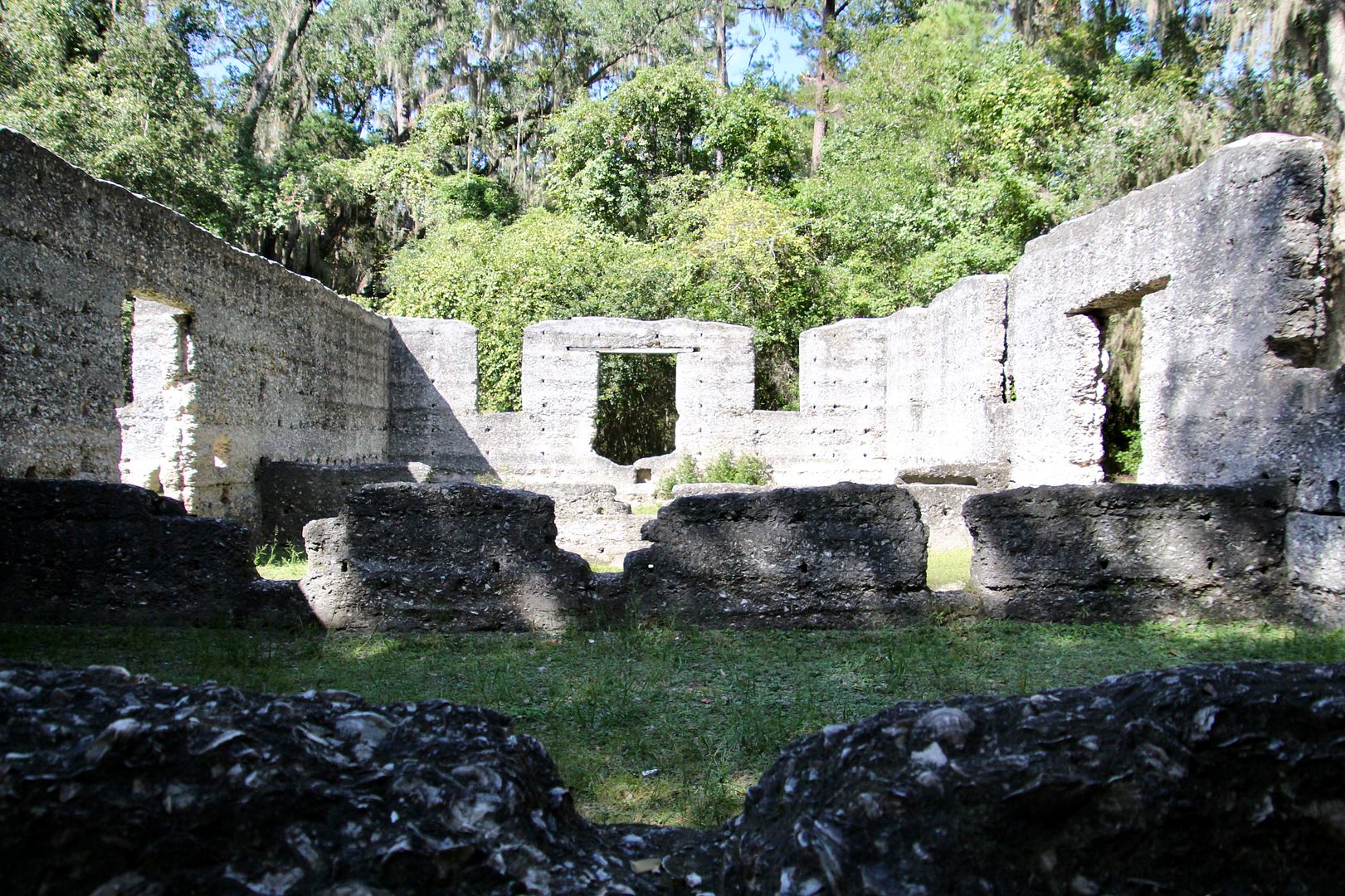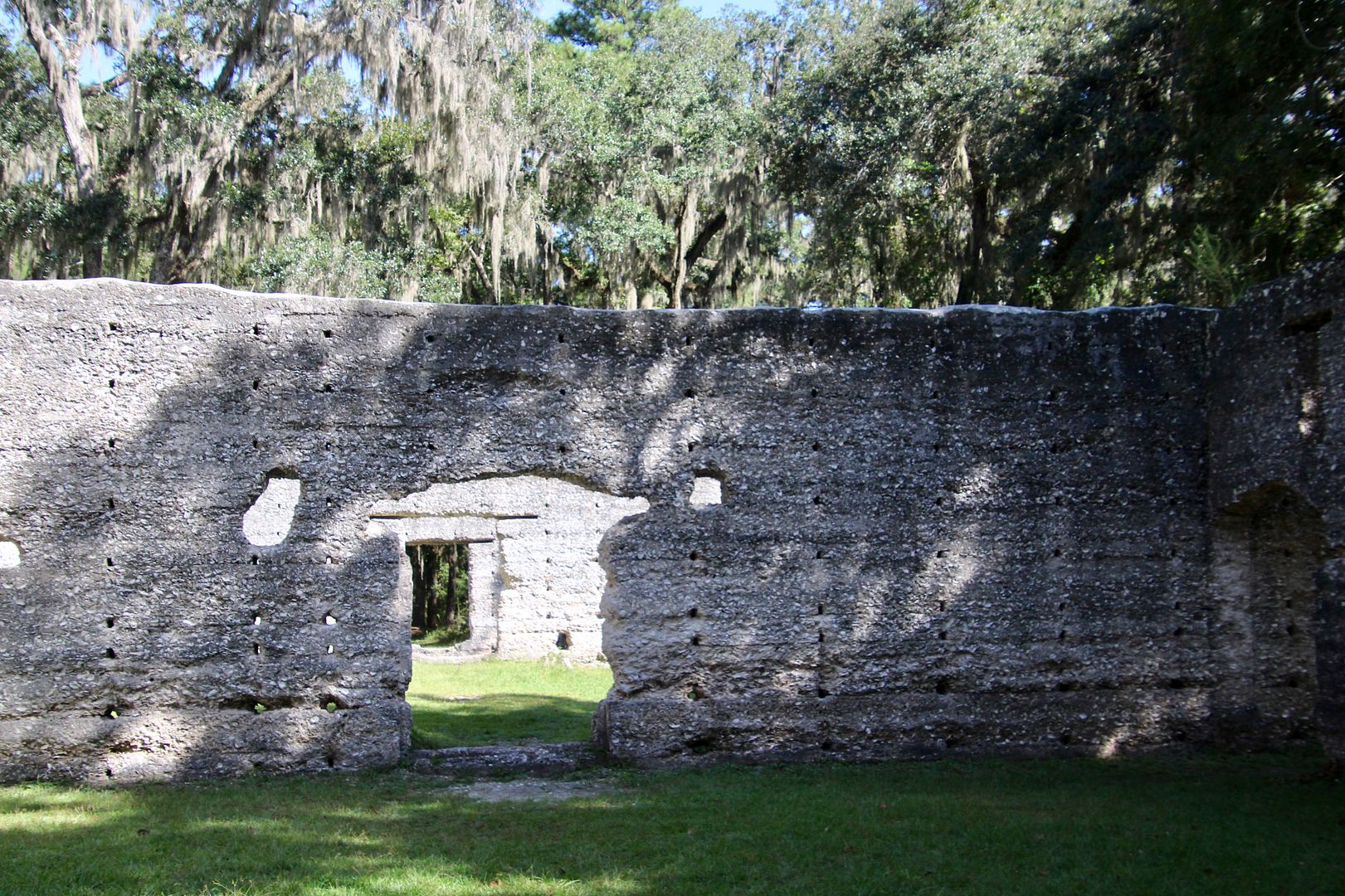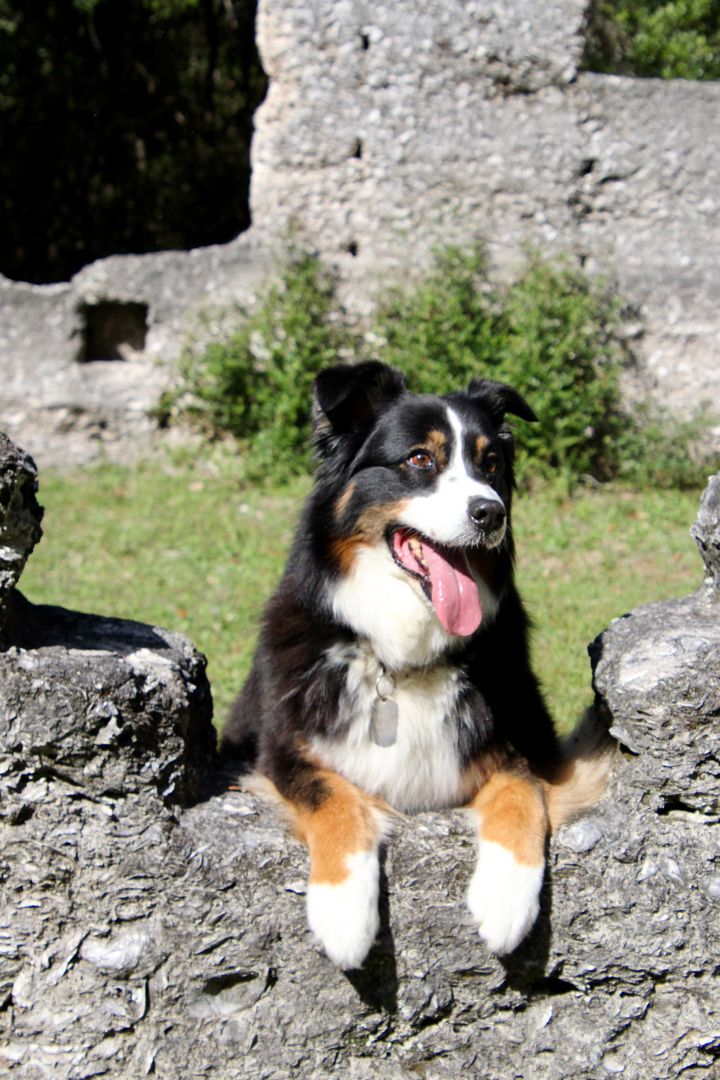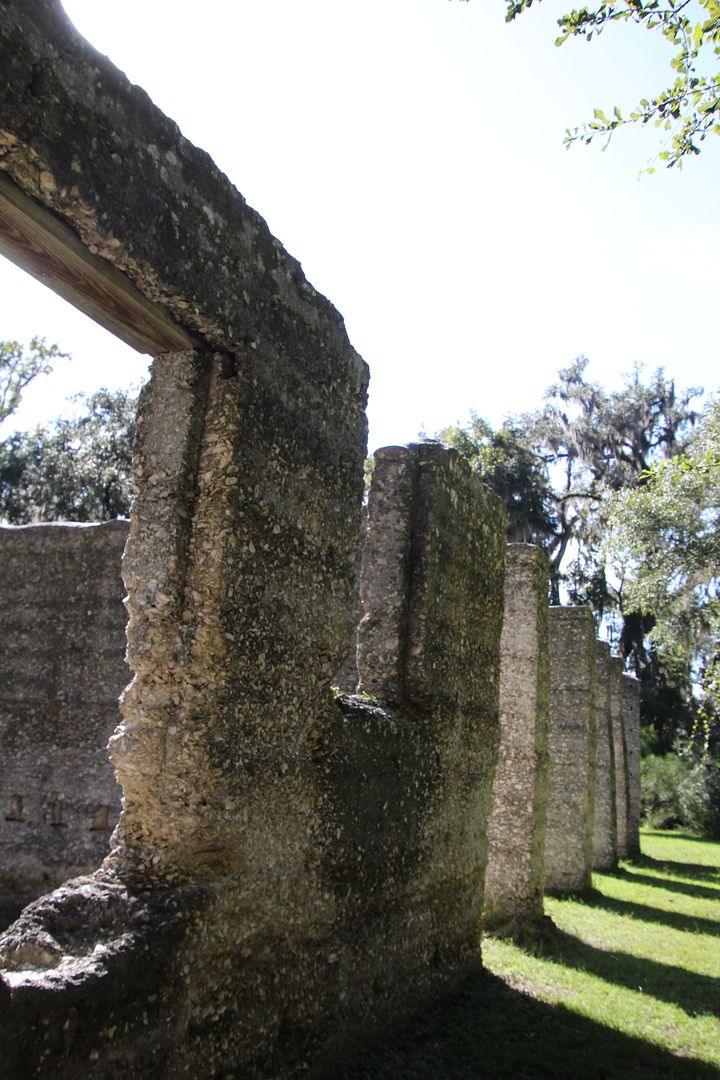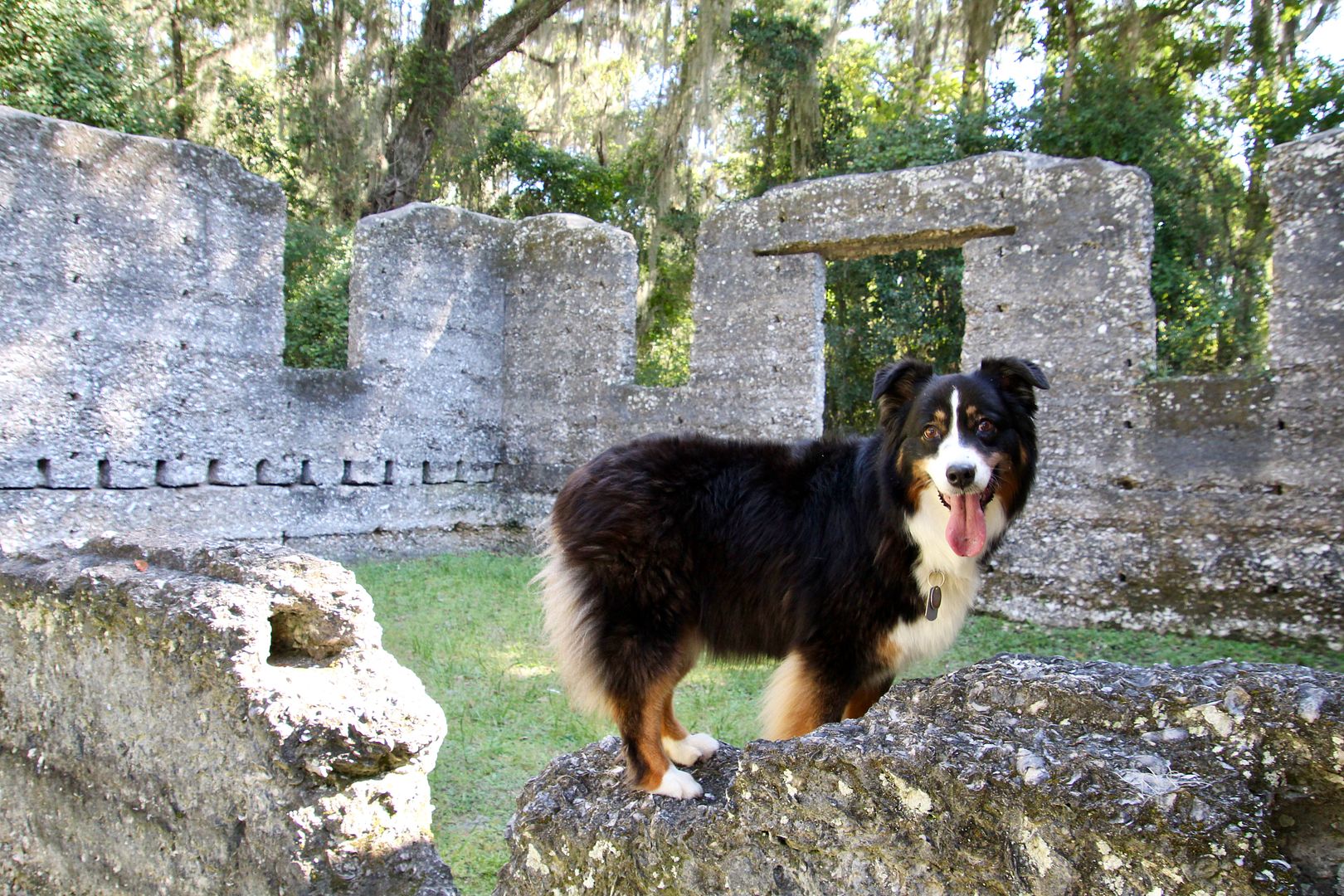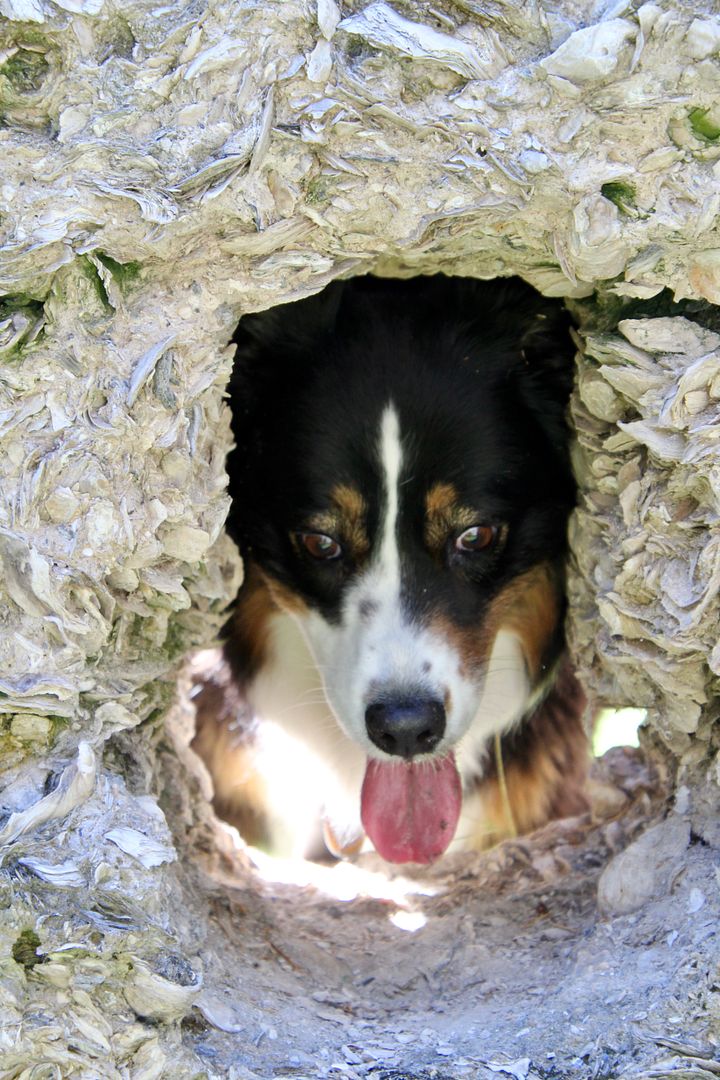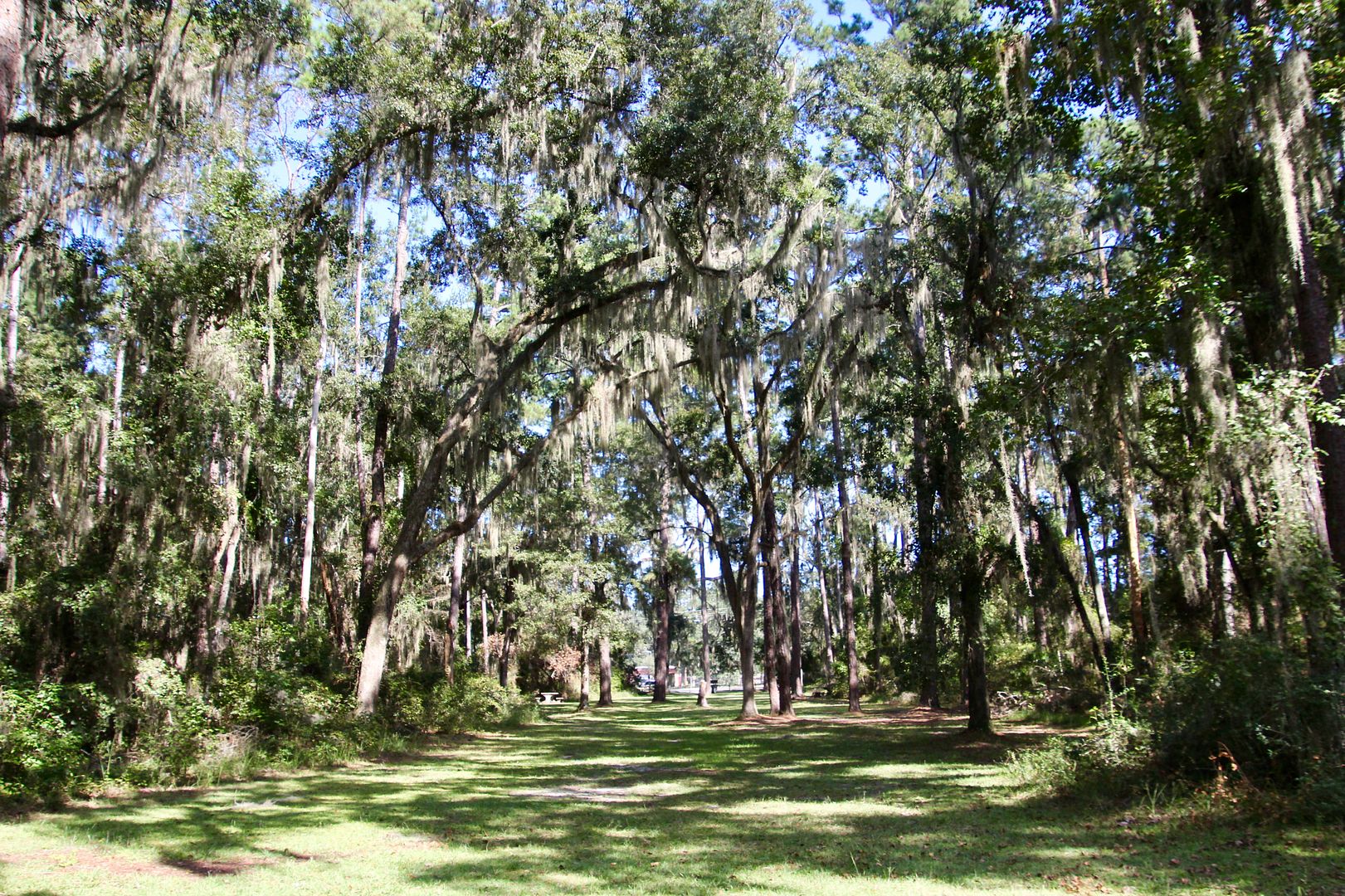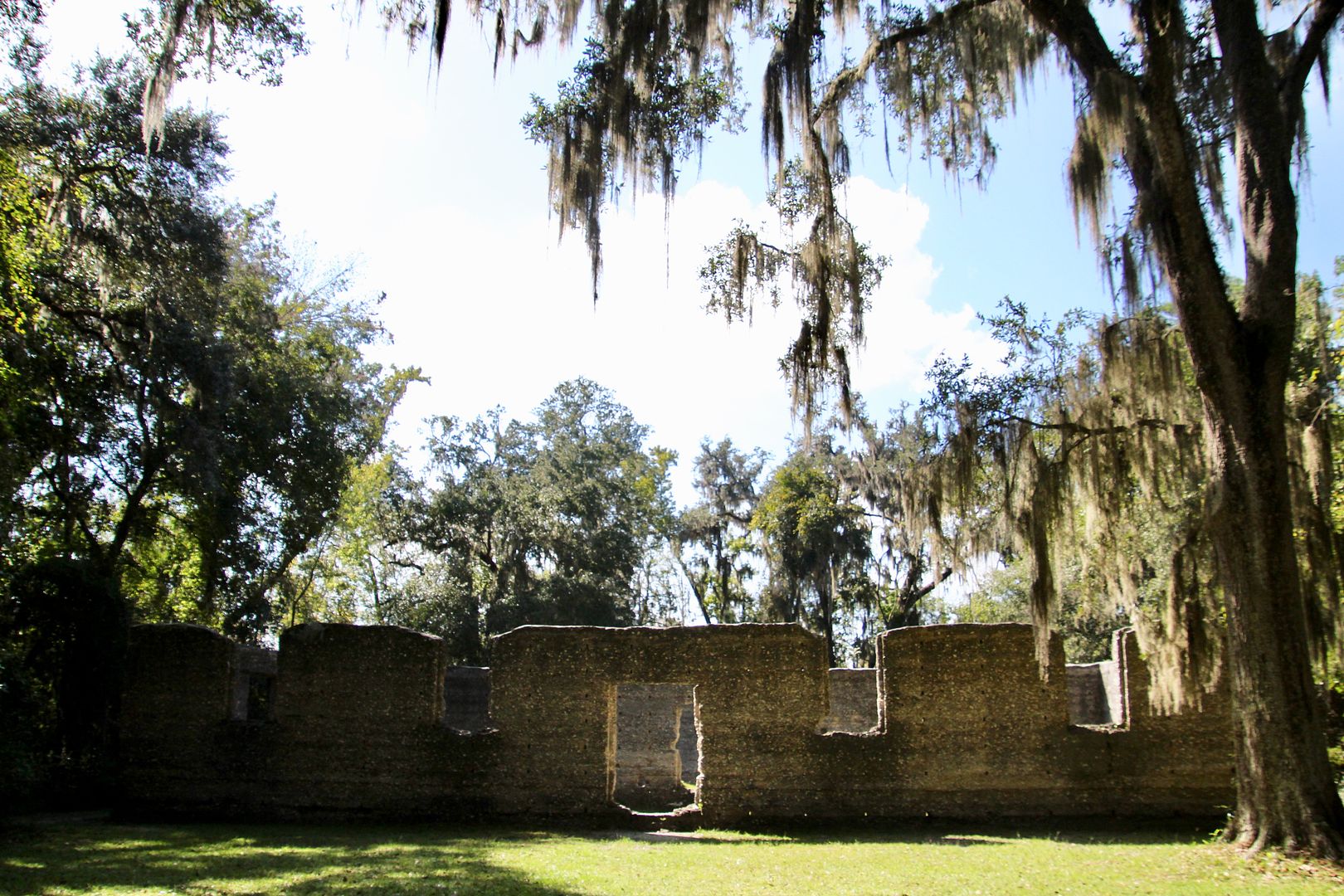You must check in at the Visitor Center (St. Marys, GA) about 45 minutes before departure time. They verify the reservation ($26/per) and provide a ticket to board. Parking for the day (no fee) is about a block from the Visitor Center, and the dock is about three blocks north of it. A Park Ranger provides a short orientation about the ferry including safety instructions. Campers were permitted to load their gear onto the boat before general boarding. Lots of people also bring their bicycles (although bikes can also be rented on the island for $16/day). No dogs are permitted on the island.
The dock is on St. Marys River and it takes about 45 minutes to get to Cumberland Island. We chose to ride upstairs to enjoy the views, but there is an enclosed area below where a few snacks, water, and soft drinks can be purchased. A cormorant was sitting atop a buoy and we saw many birds in the marshy areas while en route.
Although I did not get a good picture of them, dolphins were swimming alongside the ferry once we were close to the island. And we saw a bald eagle (not a very good photo) on a tree, too!
You must bring (and pack out) everything you will need for the day. There are no trash cans on the island (but there is potable water at the Sea Camp Ranger Station).
With map in hand, we headed out on the River Trail toward the Dungeness Ruins.
The trail affords views of Cumberland Sound. We came to the Captain’s House (c 1900) that is now a Ranger Station, but it is a lovely spot enjoy the views
The Ice House Museum has displays about the inhabitants of the island, from Native Americans to the Carnegie estates. The building (c 1885) was used to store 300 pound ice blocks cut from frozen lakes in the north and delivered by schooner to the island. Once ice could be generated (1901), the Ice House was used for storage.
Information about the First African Baptist Church located on the northern part of the Island in the The Settlement (originally home to freed slaves) is also on display. John F. Kennedy, Jr., and Caroline Bissette were married in the tiny church in a very private ceremony in 1996.
We continued on the road toward the Dungeness Ruins when we first saw some of the horses that live here. They are the only herd of feral horses (estimated at 150) on the Atlantic coasts that are not managed (no food, water, veterinary care, or population control provided). They live up to about 10 years, and are related to Tennessee Walkers, American Quarter Horses, Arabians and Paso Fino. It is believed that the first horses came to the island when Spanish missions were established in the late 1500s. Others were brought here by the military in the 1700s, and landowners in the 1800 and 1900s. By the time Cumberland Island became a national seashore (1972) the horses were feral.
Revolutionary War hero, General Nathanael Greene, was granted land on the island in 1783. His widow, Catherine, built a 4-story house that she named Dungeness on it. In 1884, Thomas Carnegie, and his wife Lucy, began building their winter home on Dungeness’s foundation. Thomas died shortly after the house was completed, but Lucy and their nine children spent more and more time on the Island. When Lucy died in 1916, the house was 35,000 square feet. The house was destroyed by fire in 1959 and only the brick and stone walls remain.
Extensive landscaping and formal gardens surrounded the estate. I found the pergola to be so lovely, especially with the white horse in view.
We wandered around the property and ate our picnic lunch on the lawn. Many horses were grazing in this area (stay 50’ away).
What an amazing house it must have been!
We returned to the Sea Camp Ranger Station along the road. We saw others on bicycles and some hikers, too, but mostly we were alone.
We did not hike down to the beach, although it is a popular destination for visiting families. At 4:00 pm, an informational program (about armadillos) was provided as we awaited the arrival of the ferry. We enjoyed the views of the island and the relaxing return trip to St. Marys.
The Land and Sea Tour ($45/per) is the only way to see the entire island in one day (www.cumberlandislandferry.com/lands-legacies-tours). Plum Orchard (a restored Carnegie mansion ) and the First African Baptist Church are part of the tour. The van for the tour and the park service vehicles are the only ones allowed on the island.
This is the 6th (of the 10) National Seashores we have visited. And like the National Parks, each one is unique with interesting cultural history and natural beauty. If your are in the area, I highly recommend a visit! For additional information about Cumberland Island, go to www.nps.gov/cuis.
